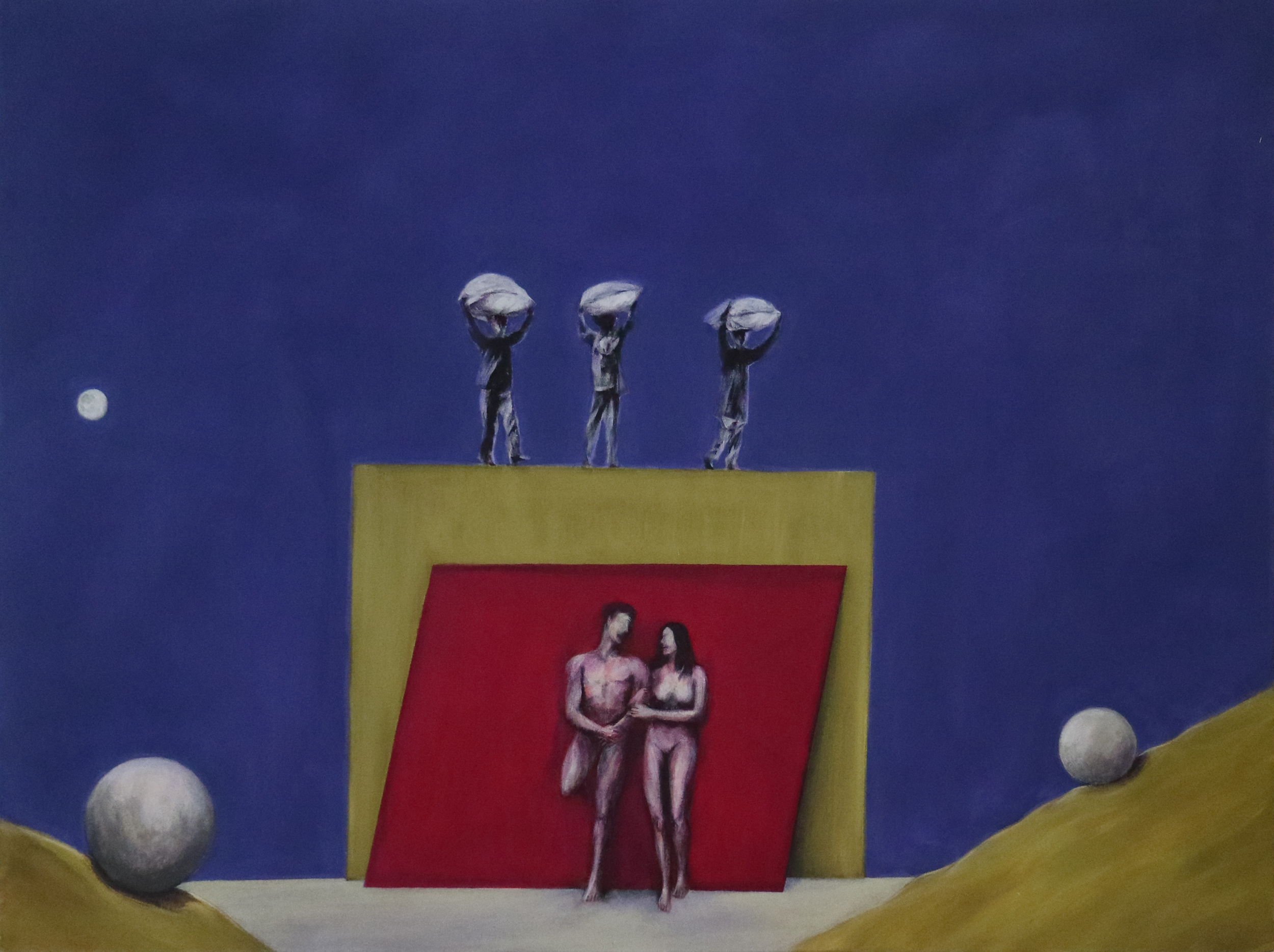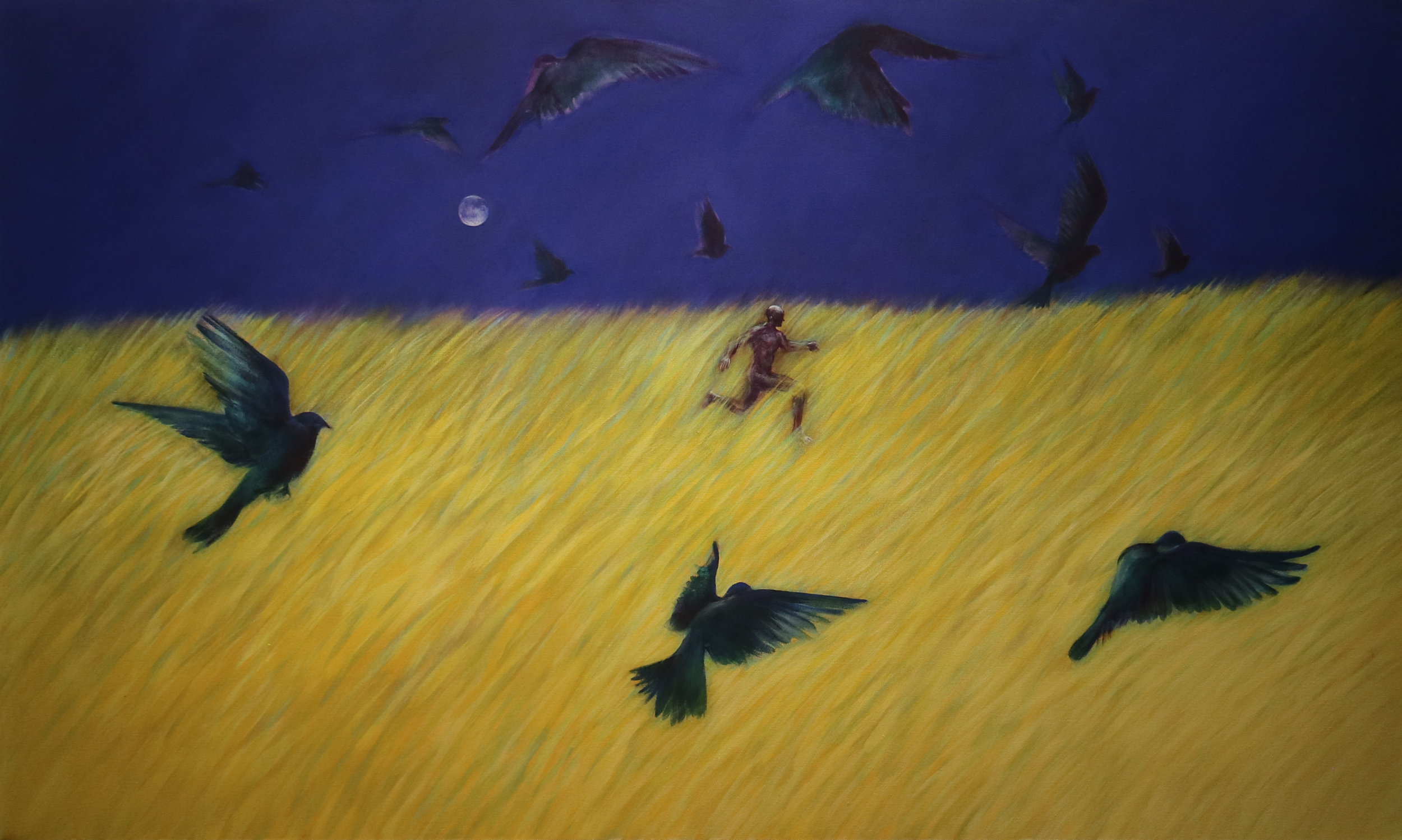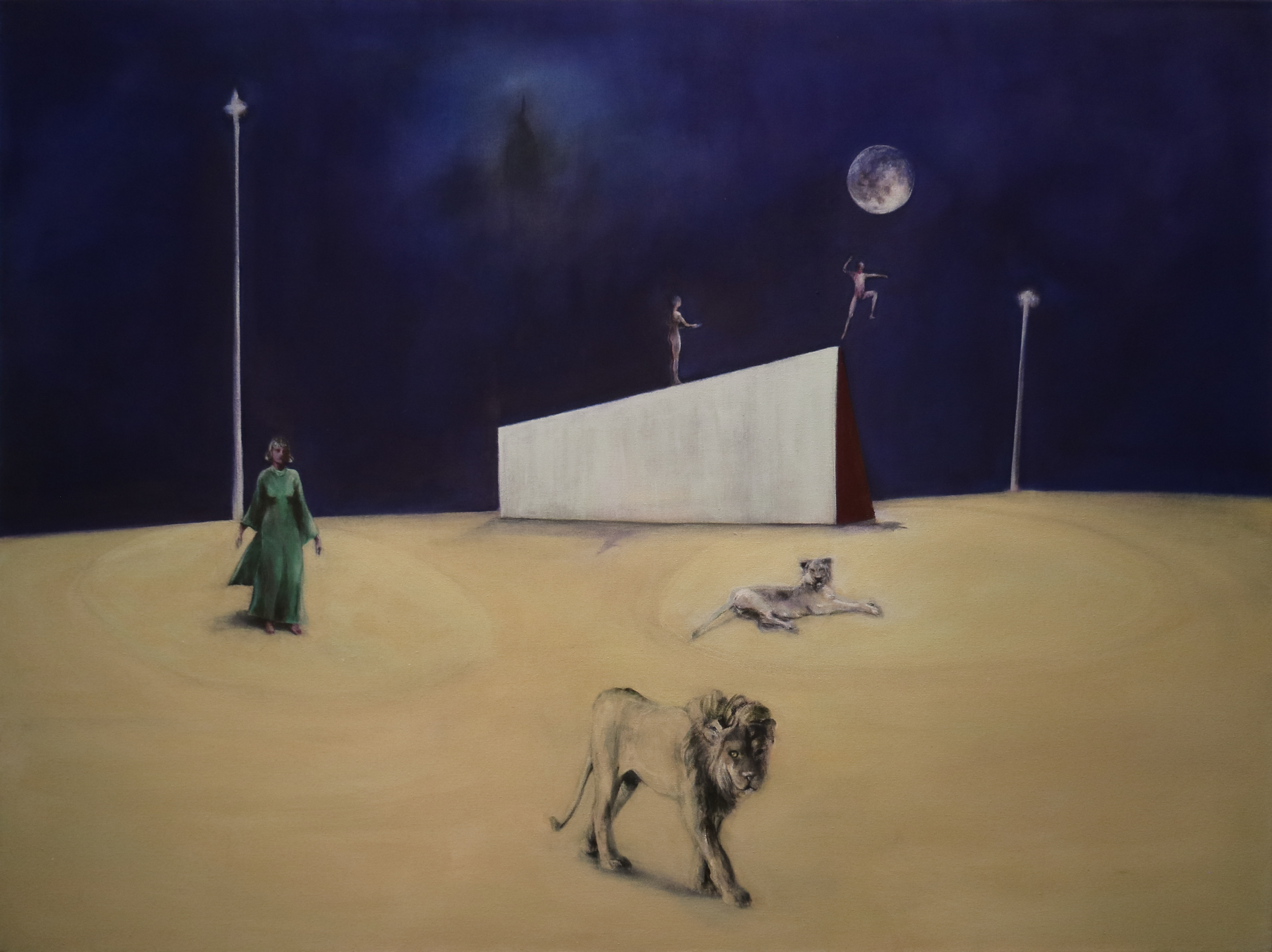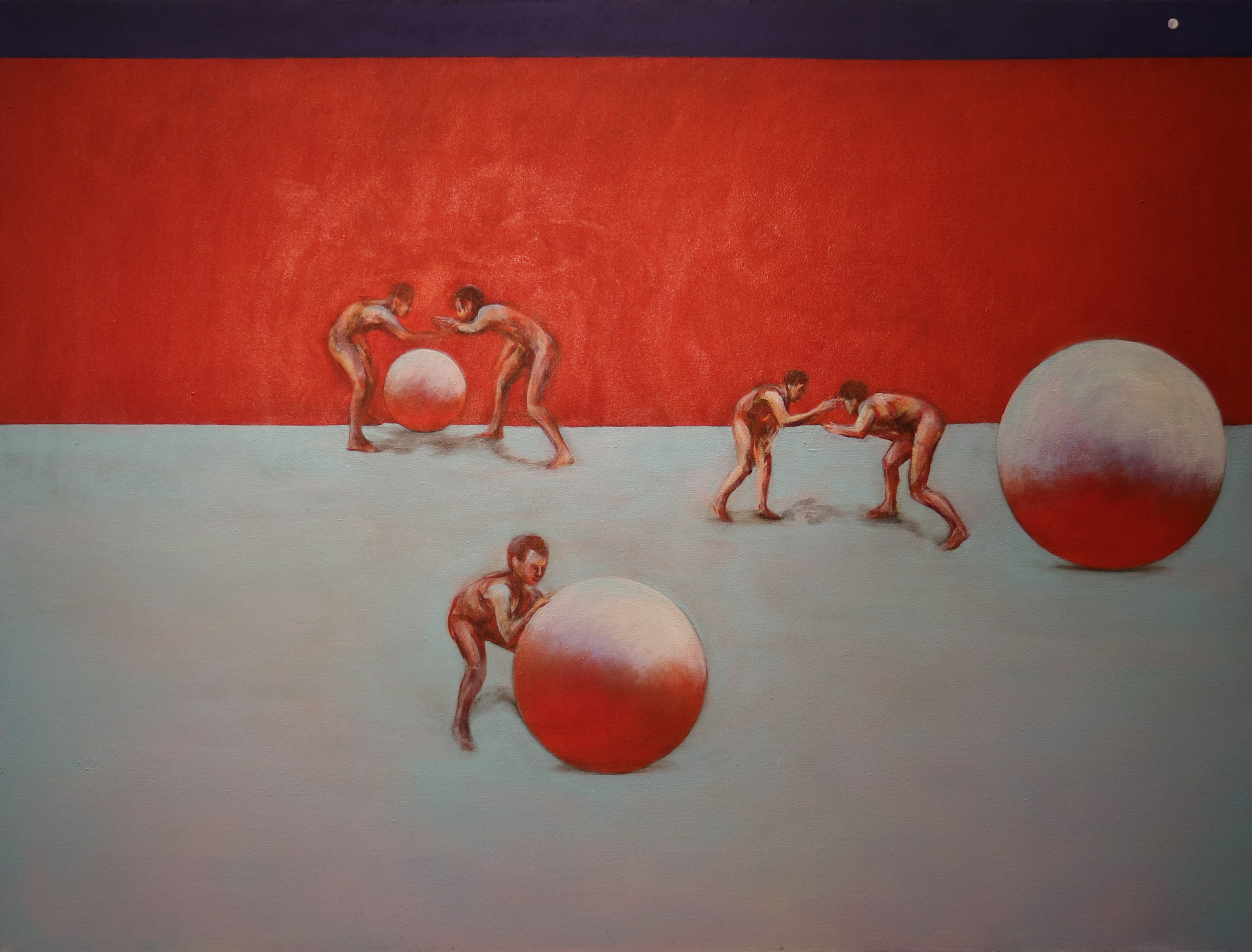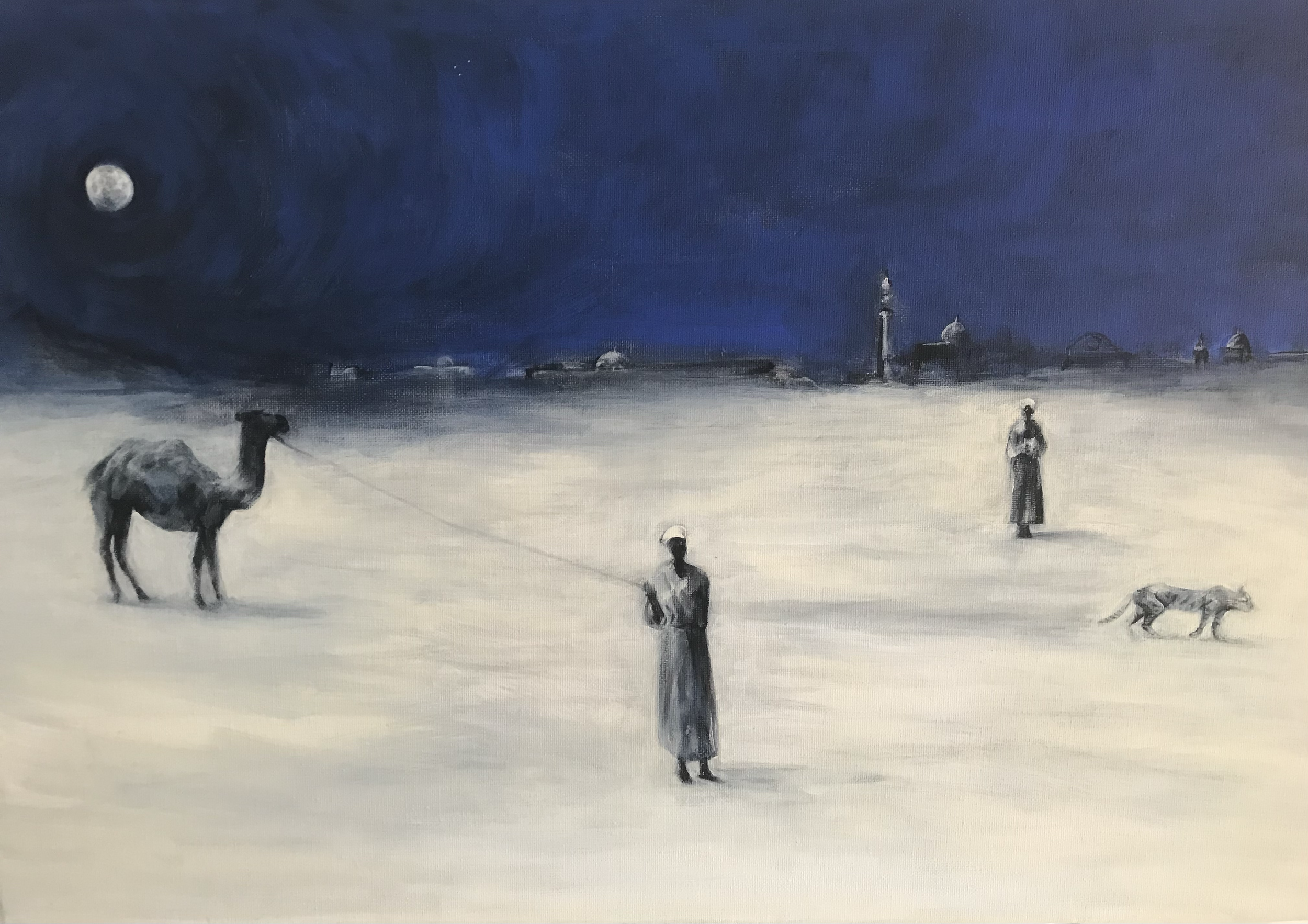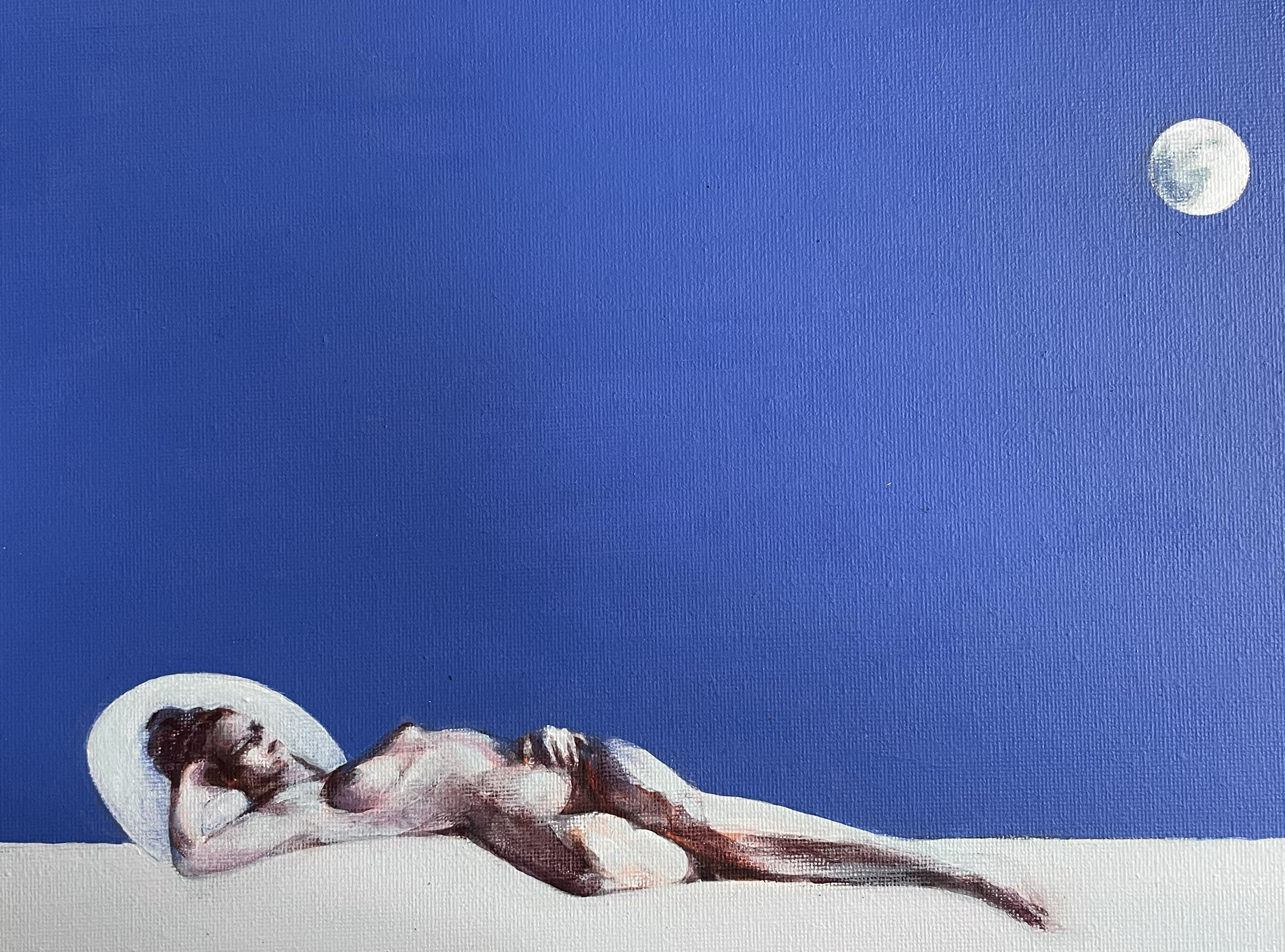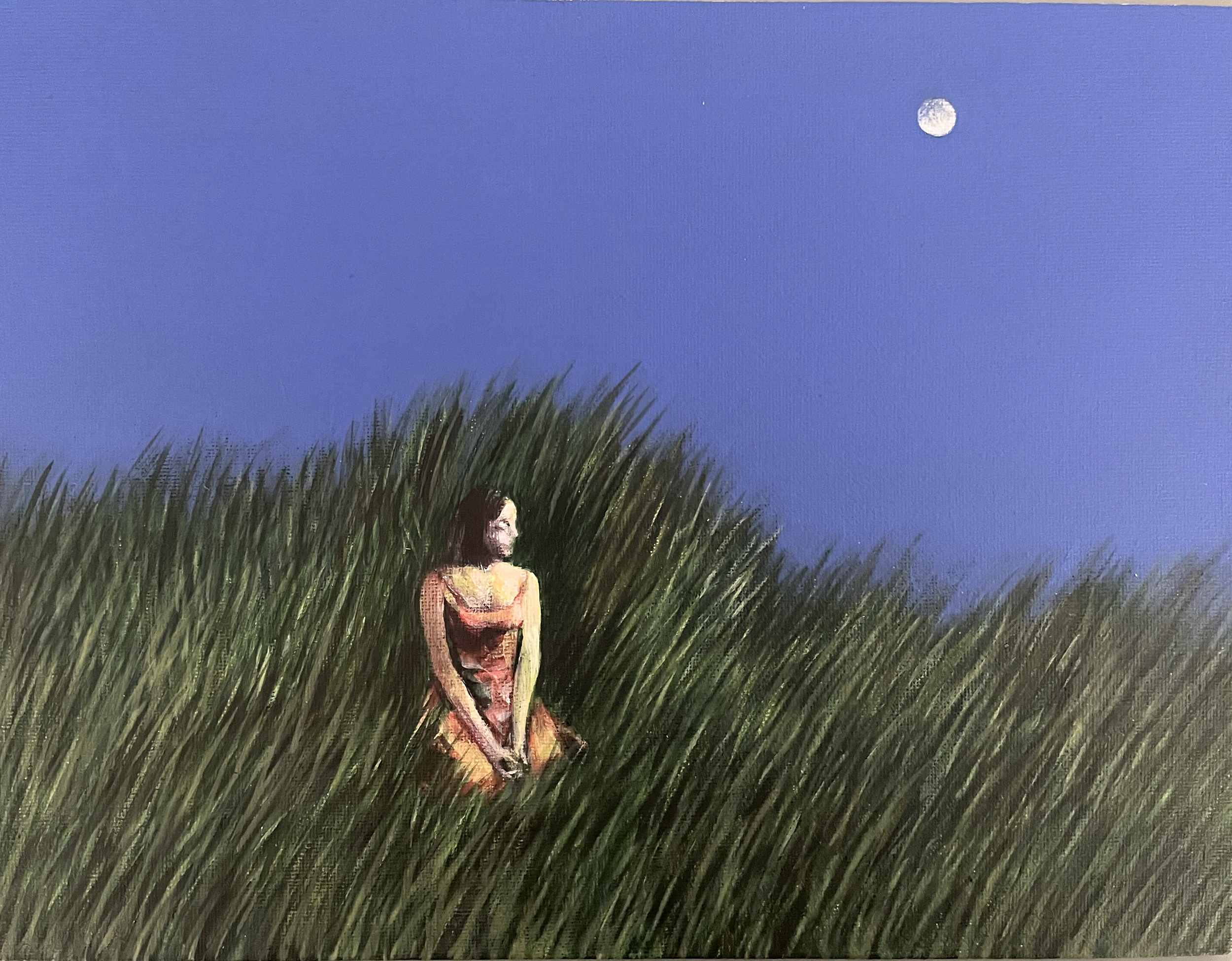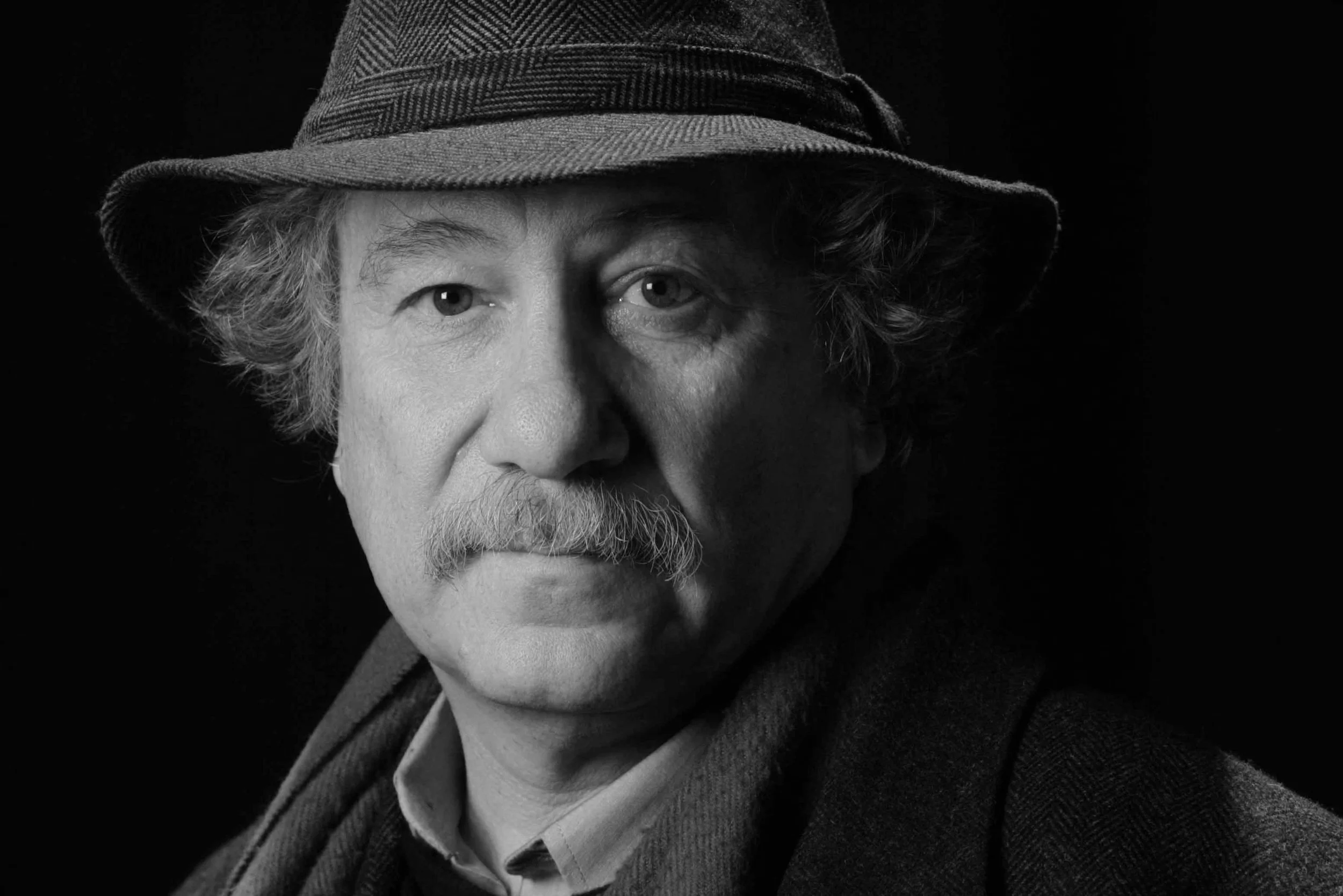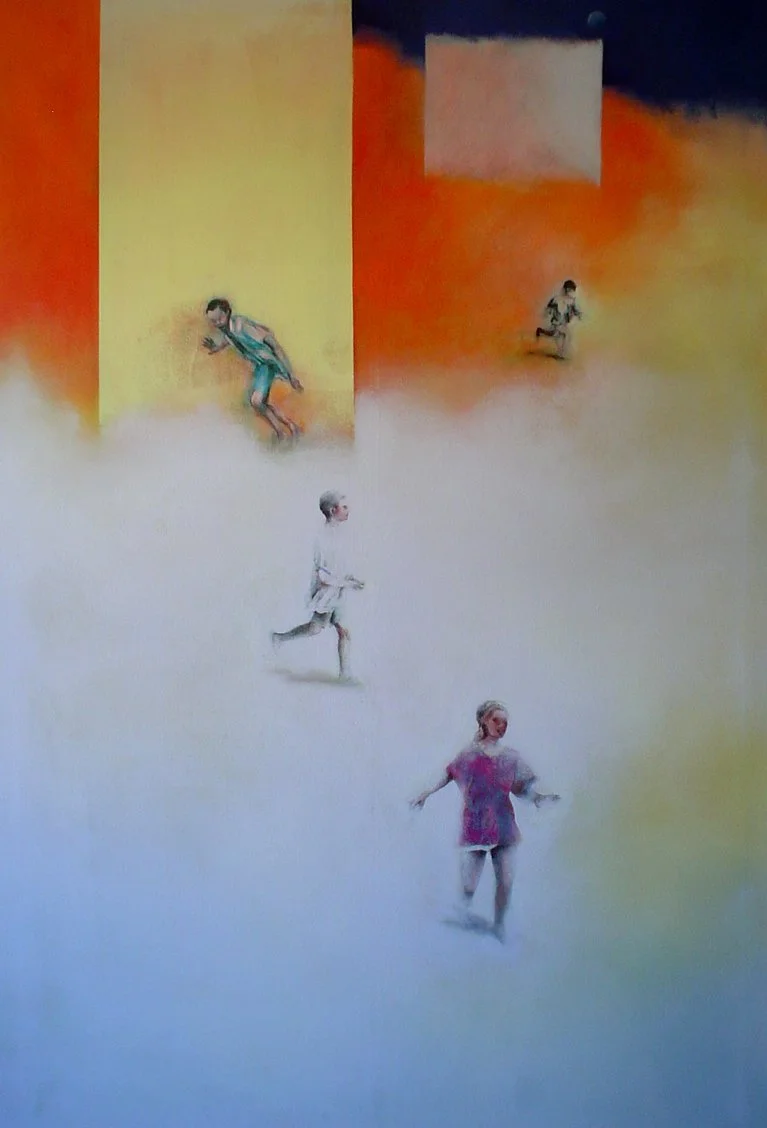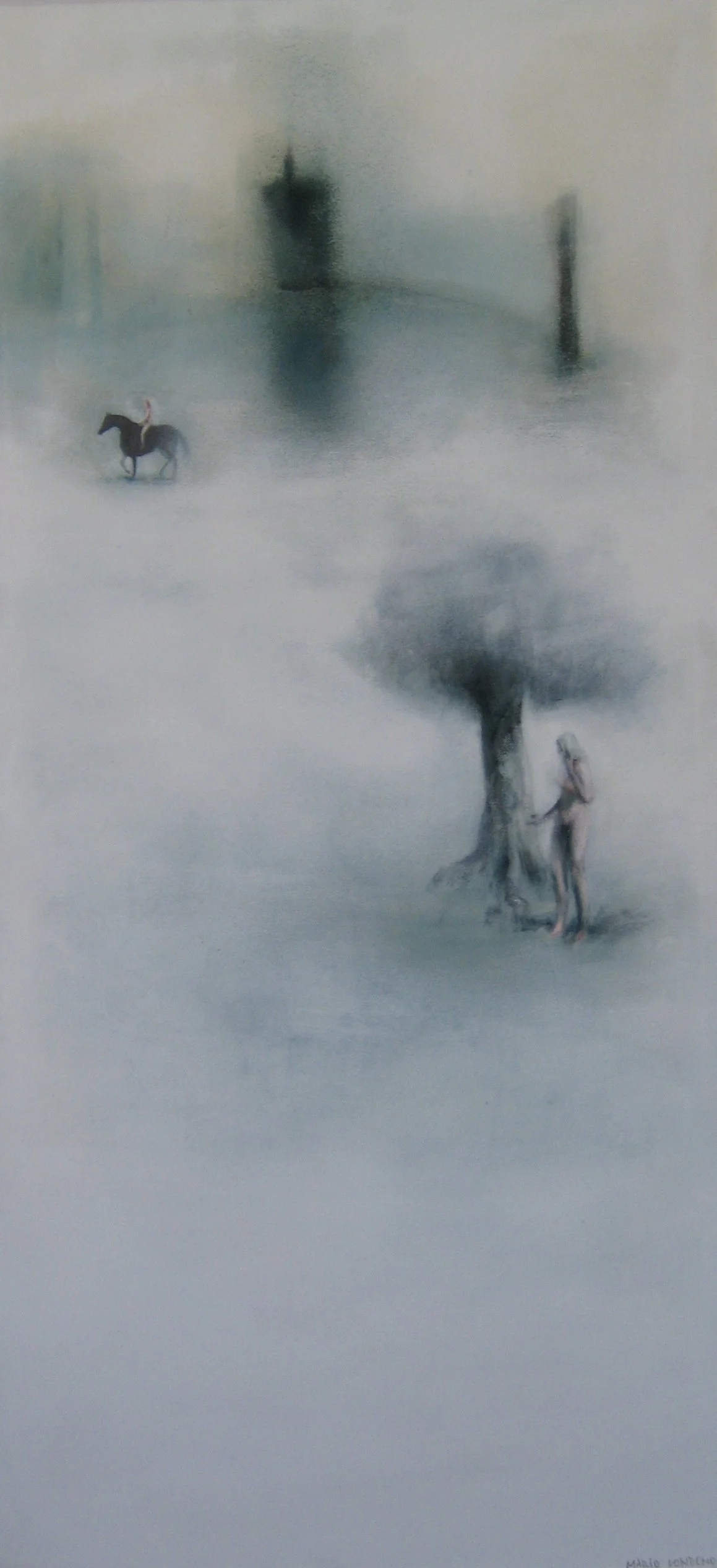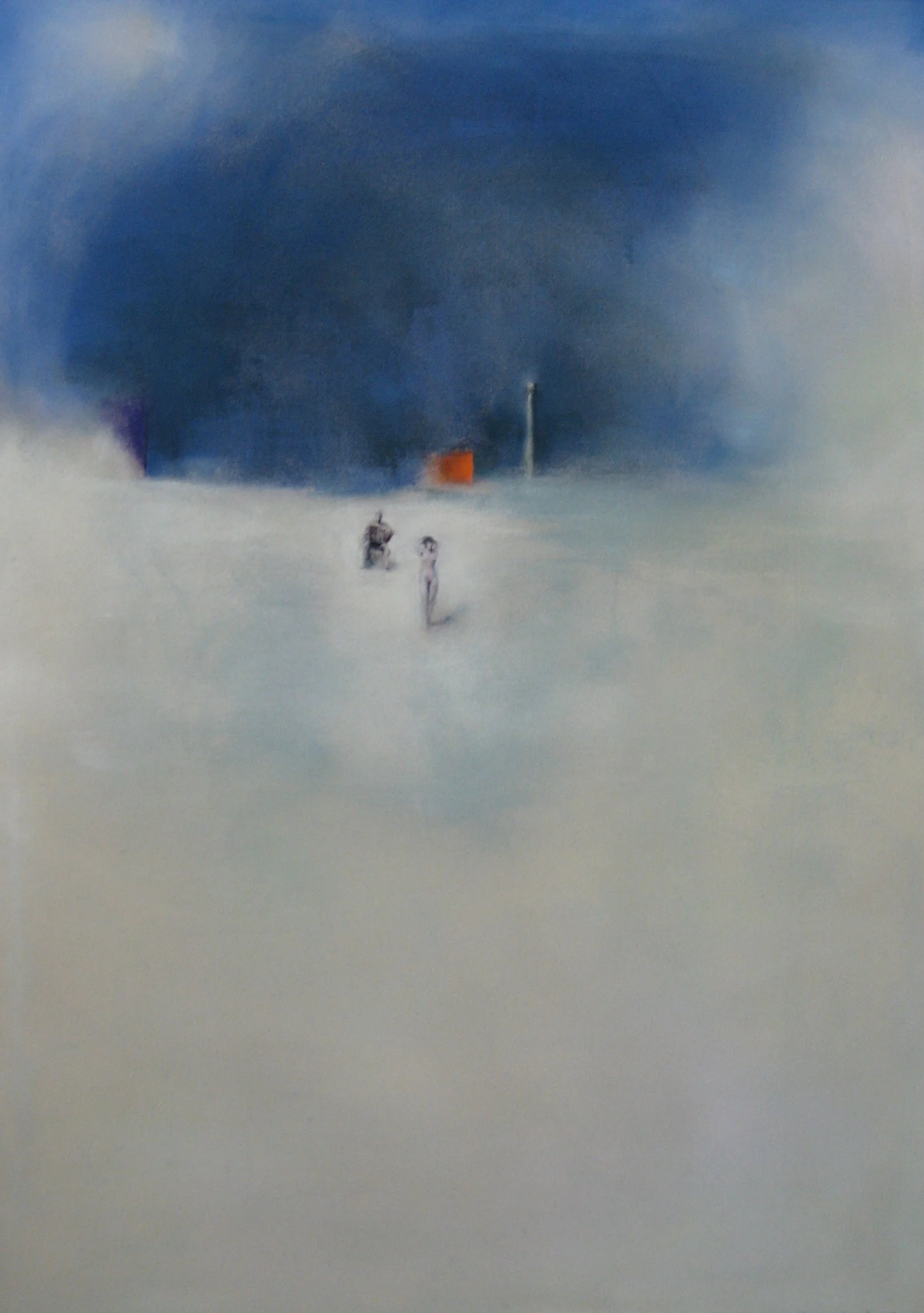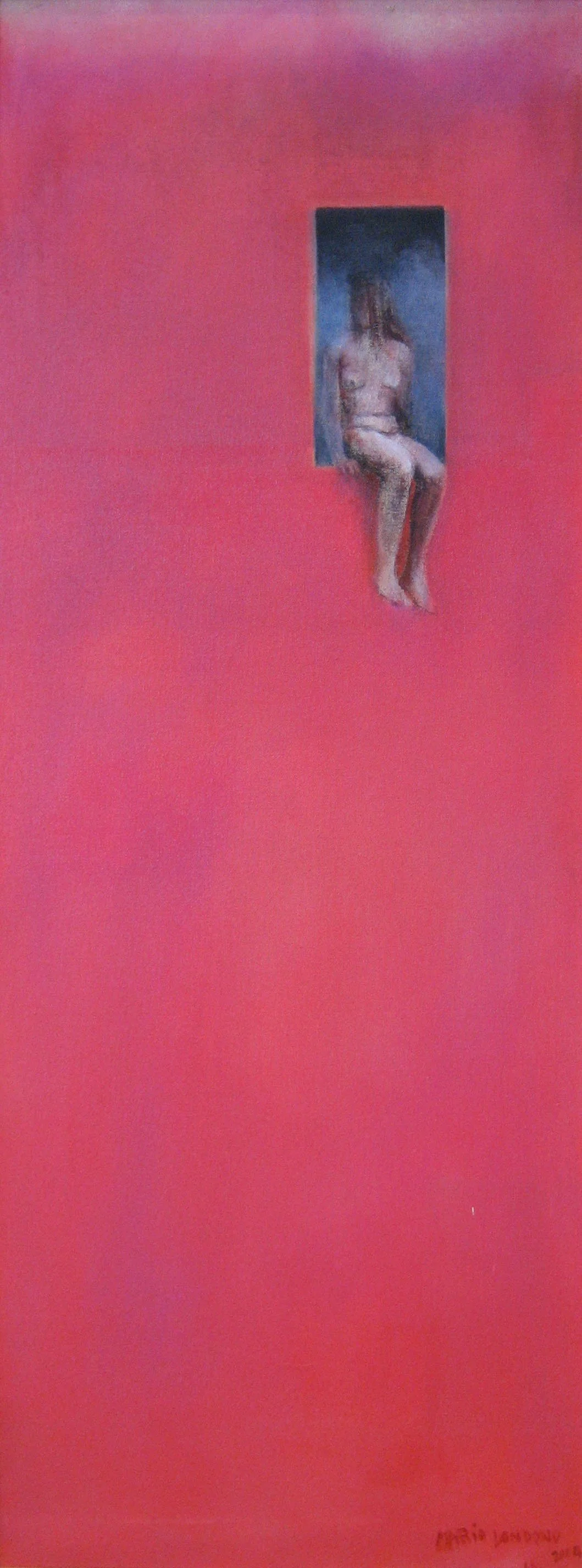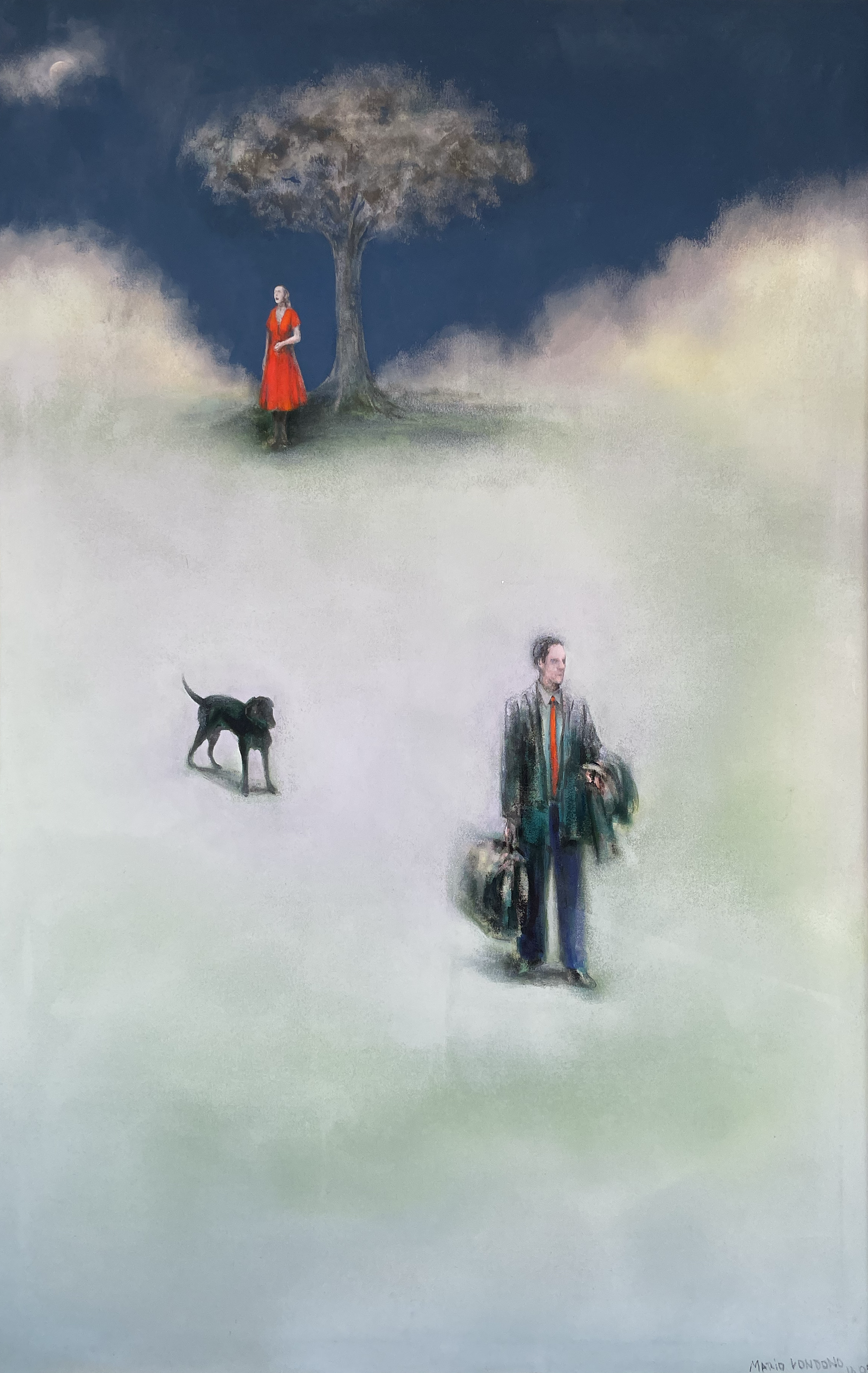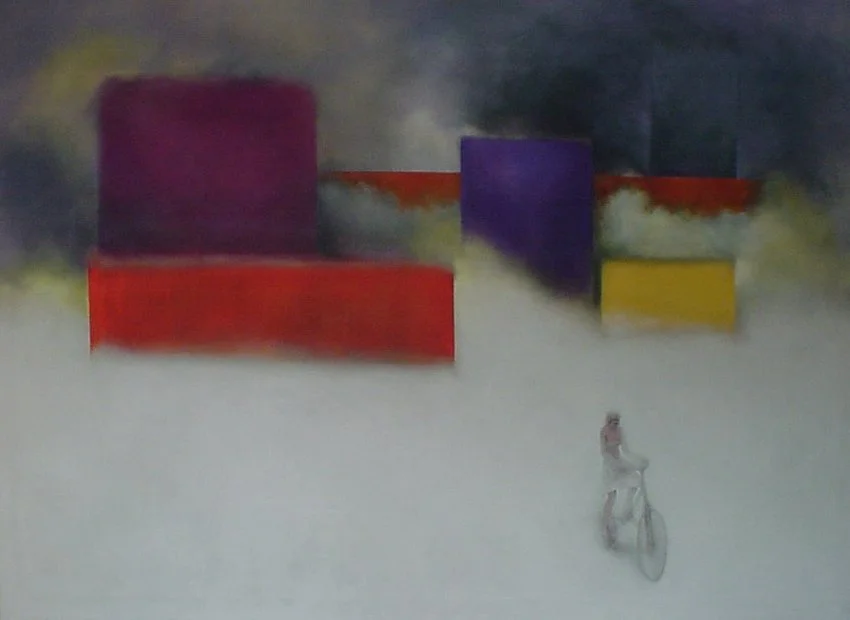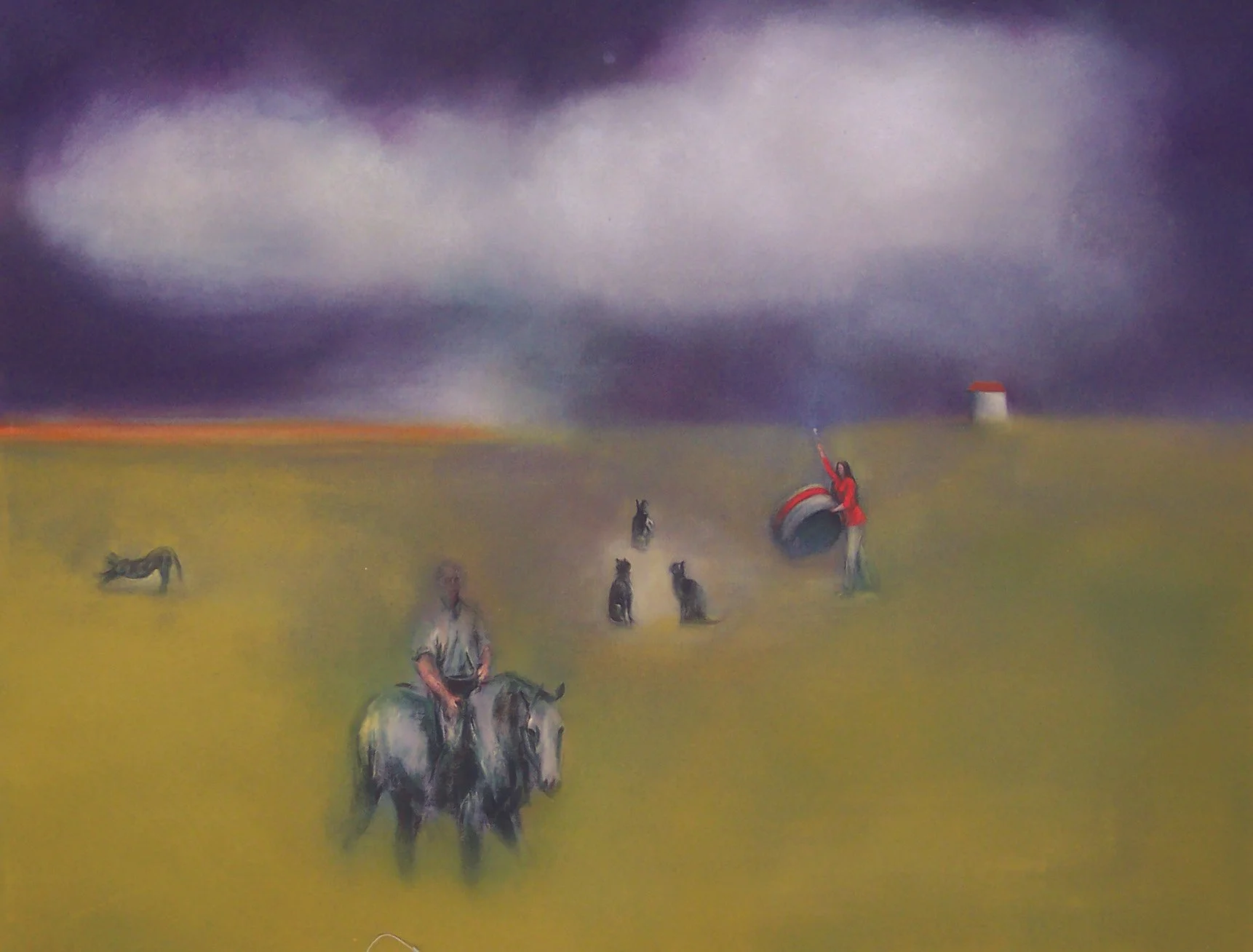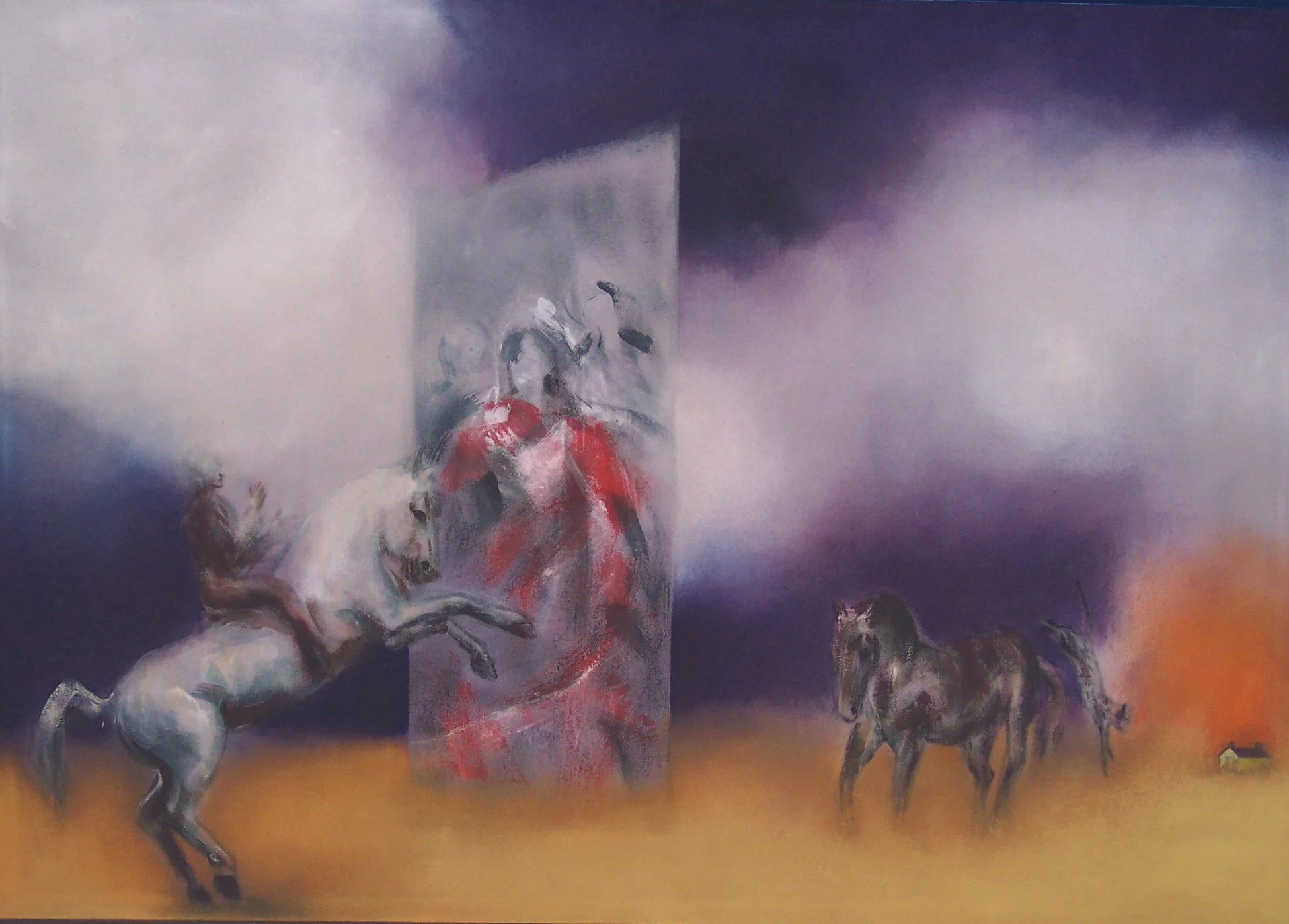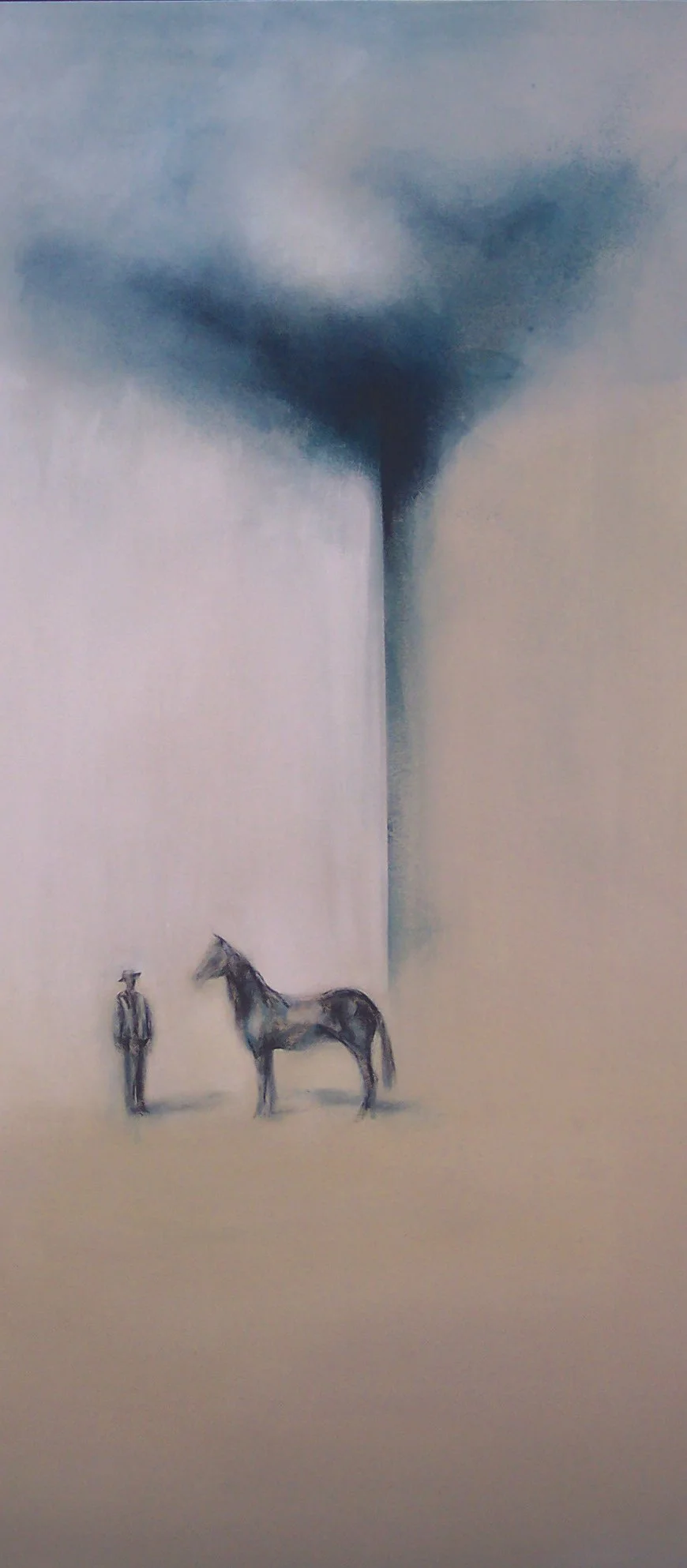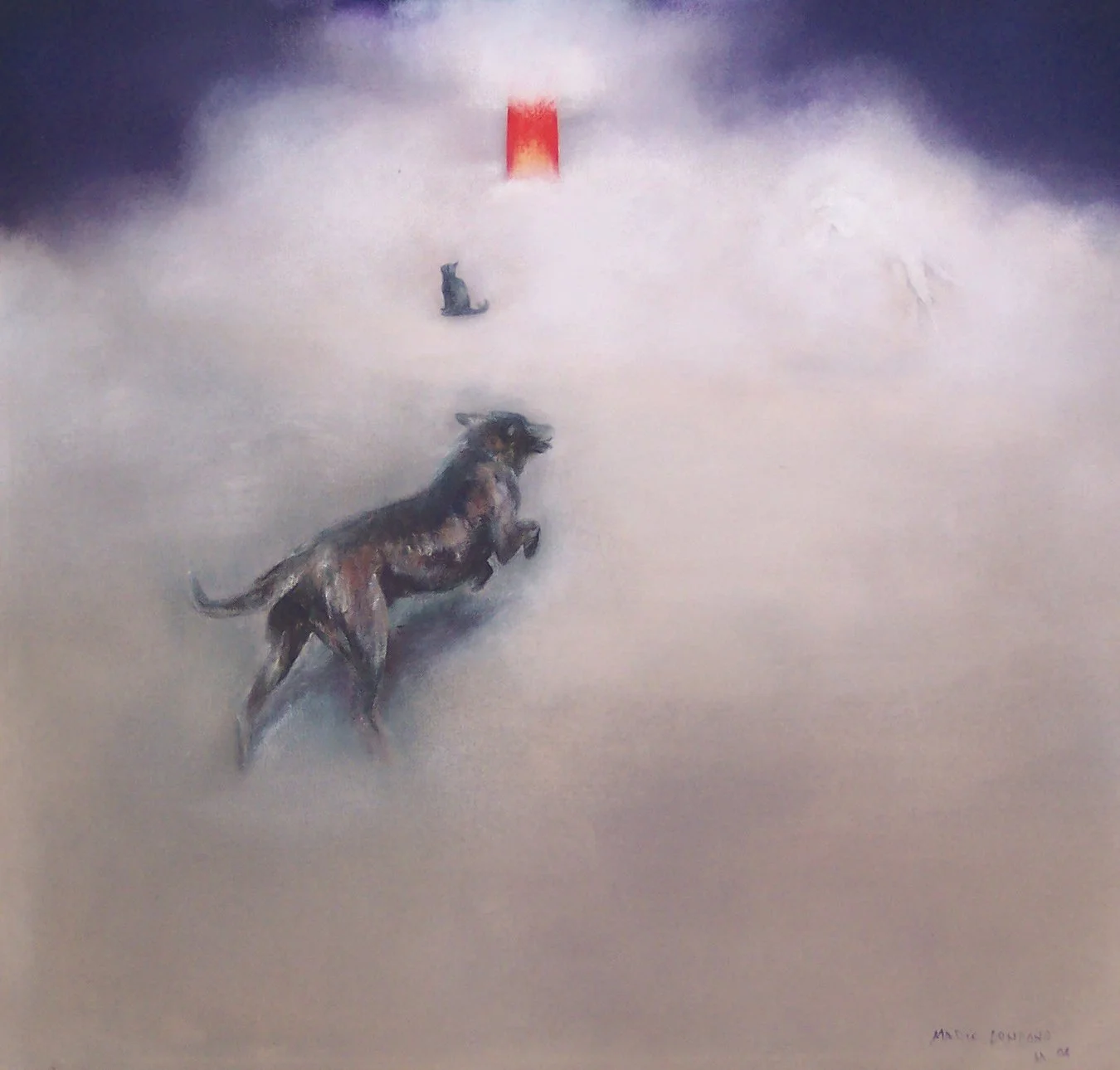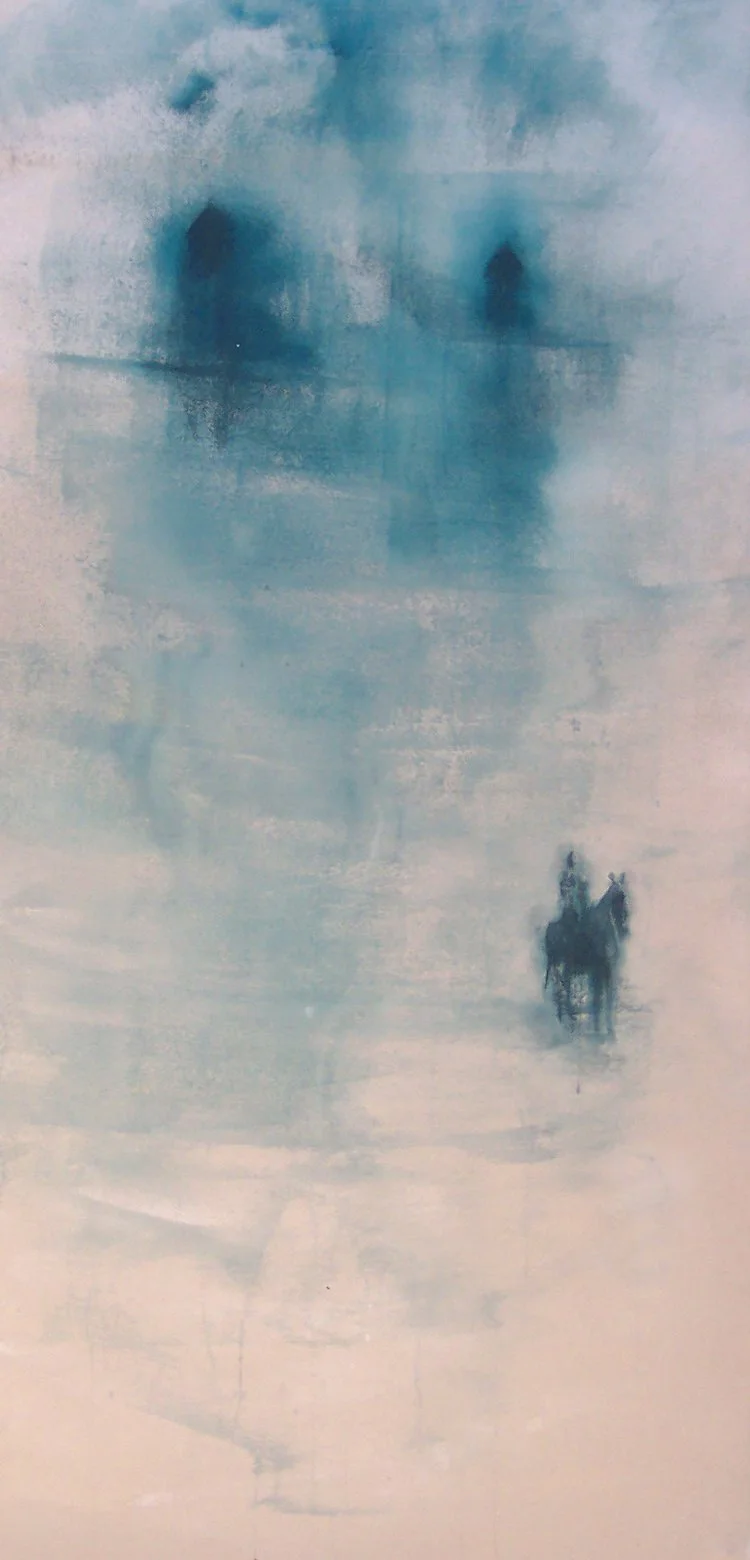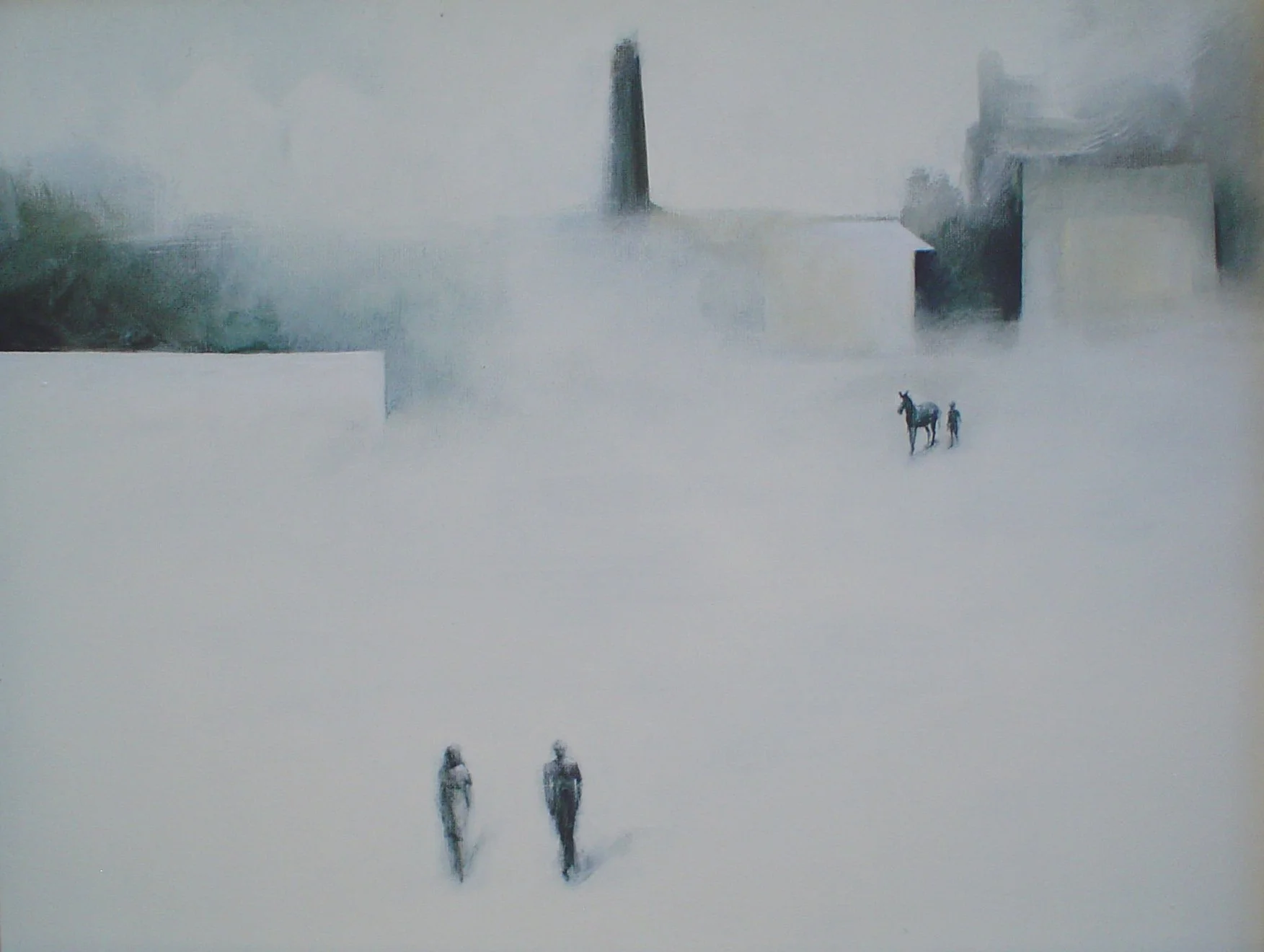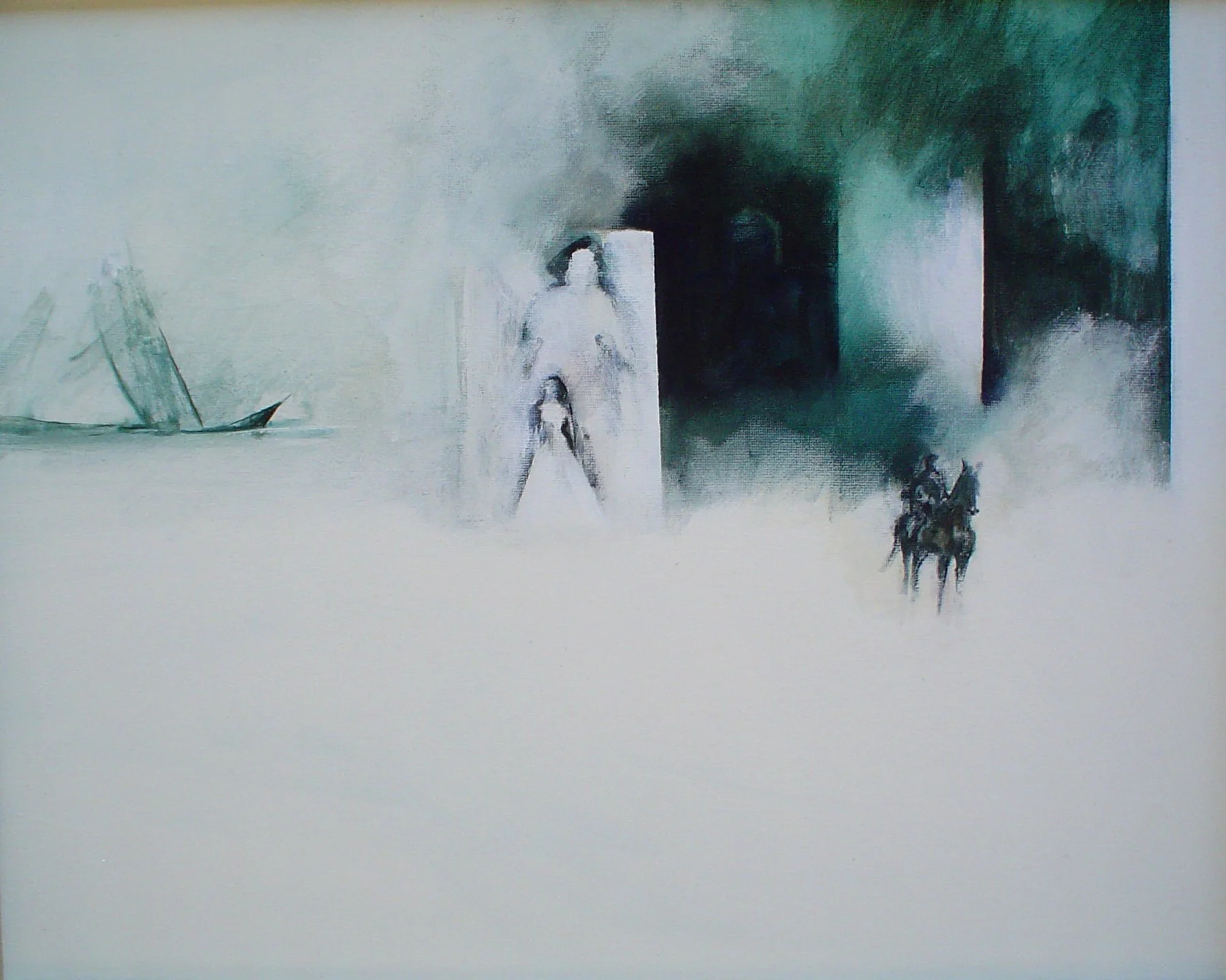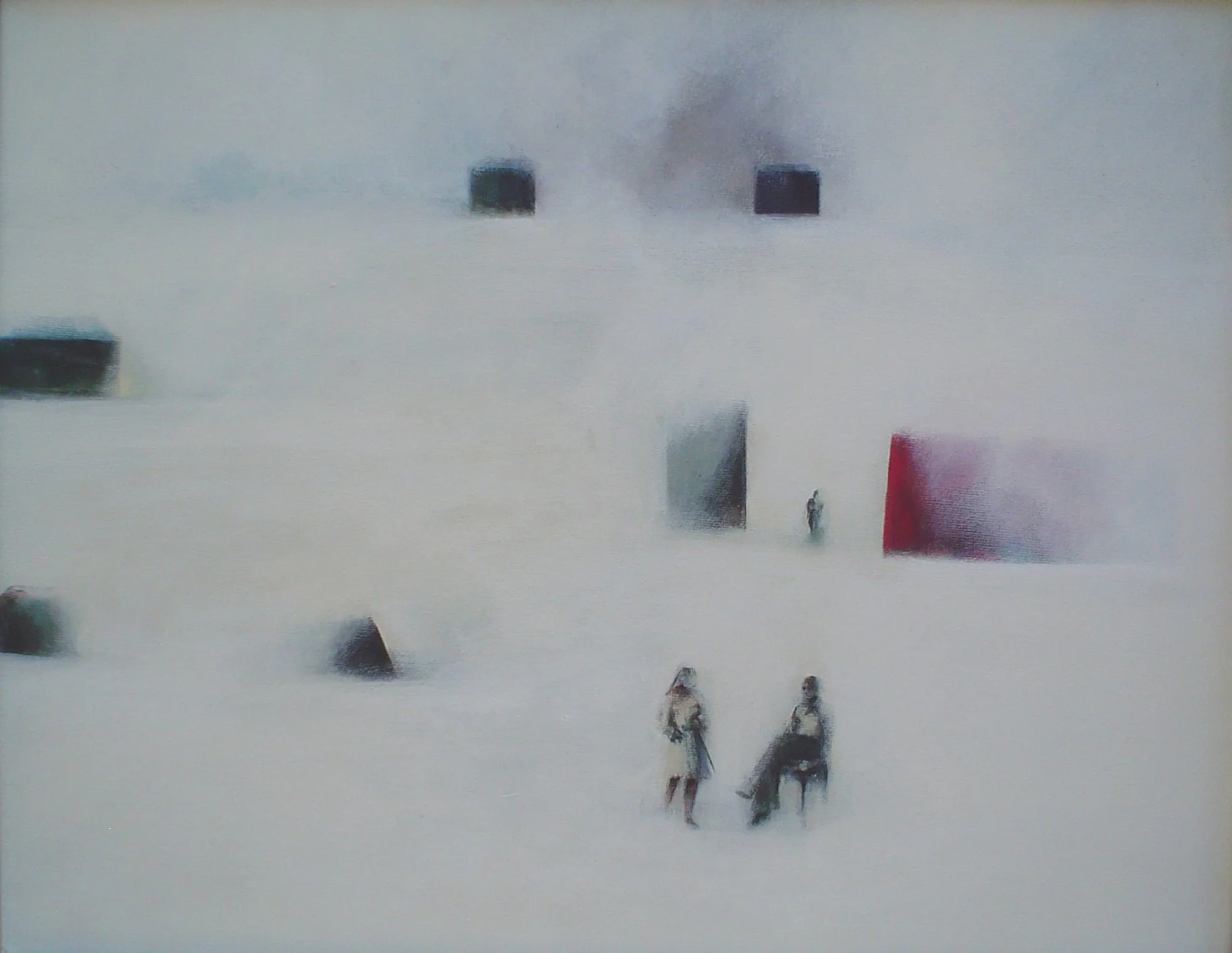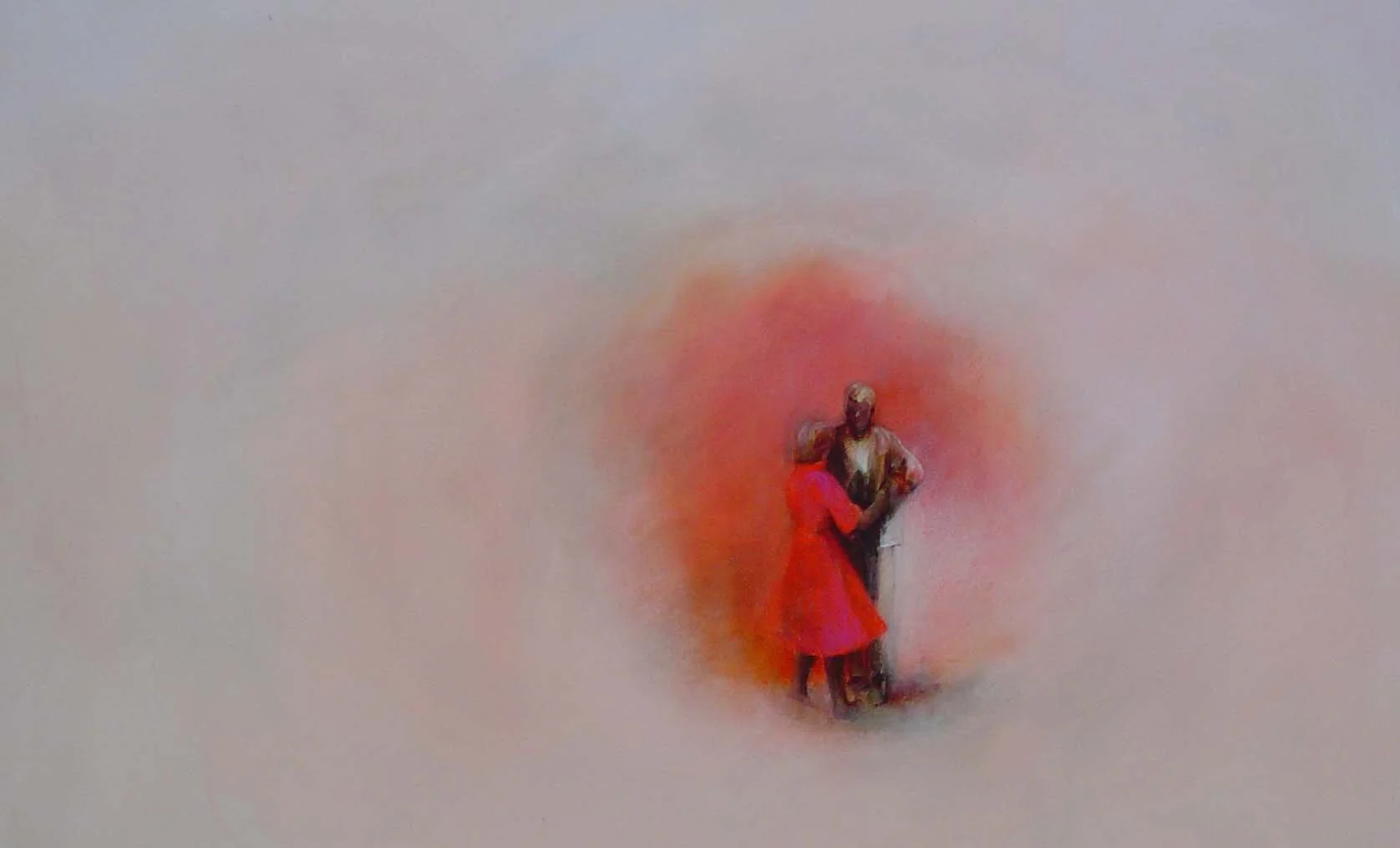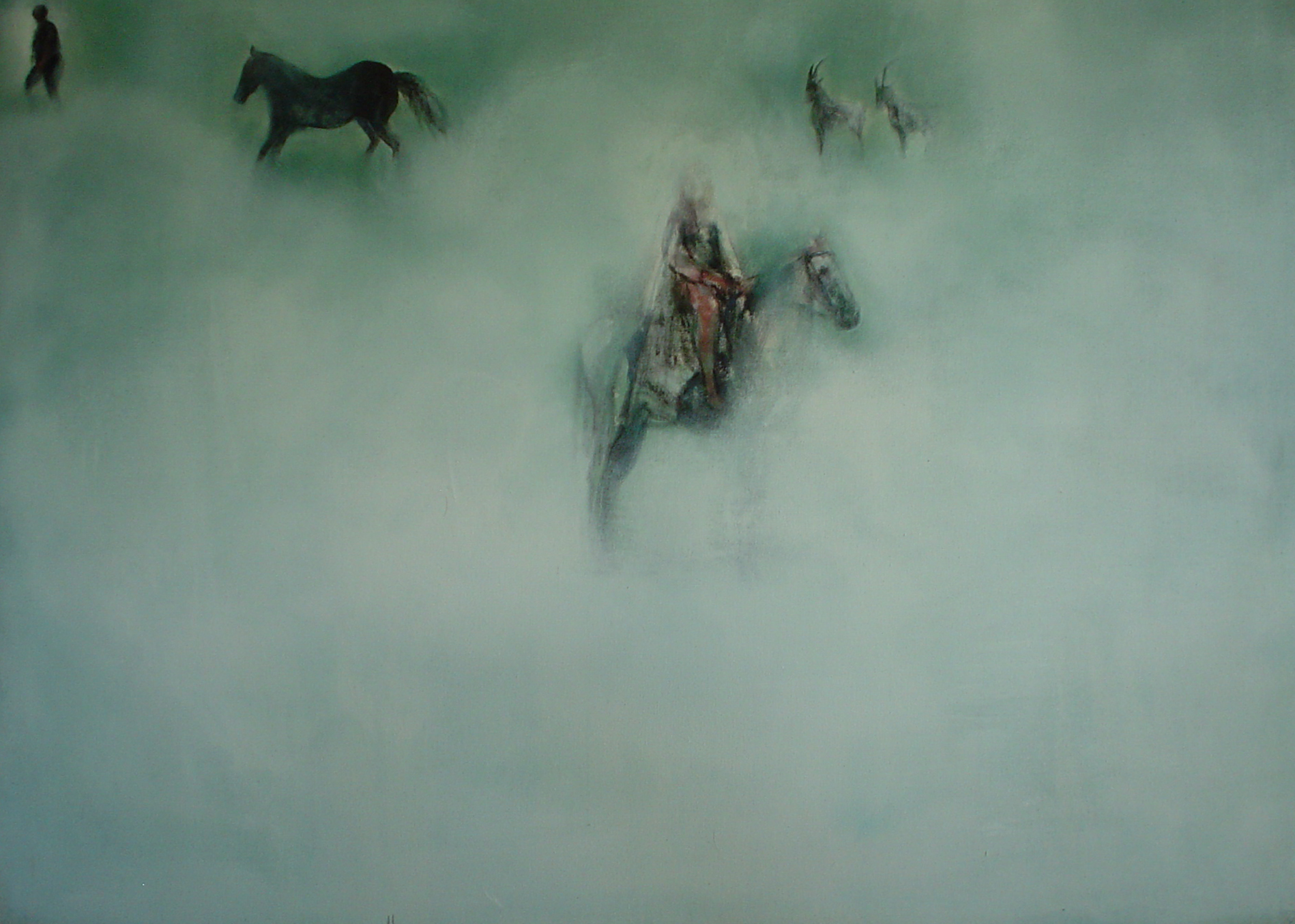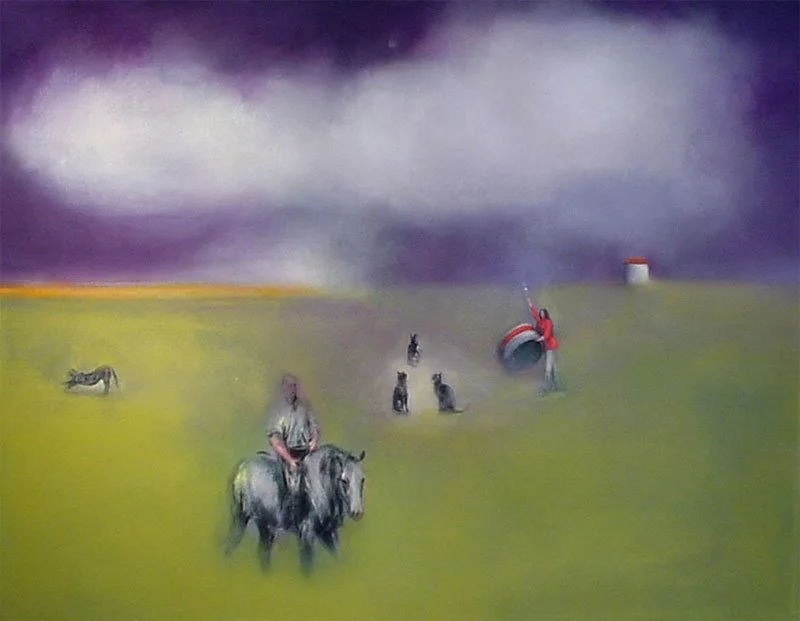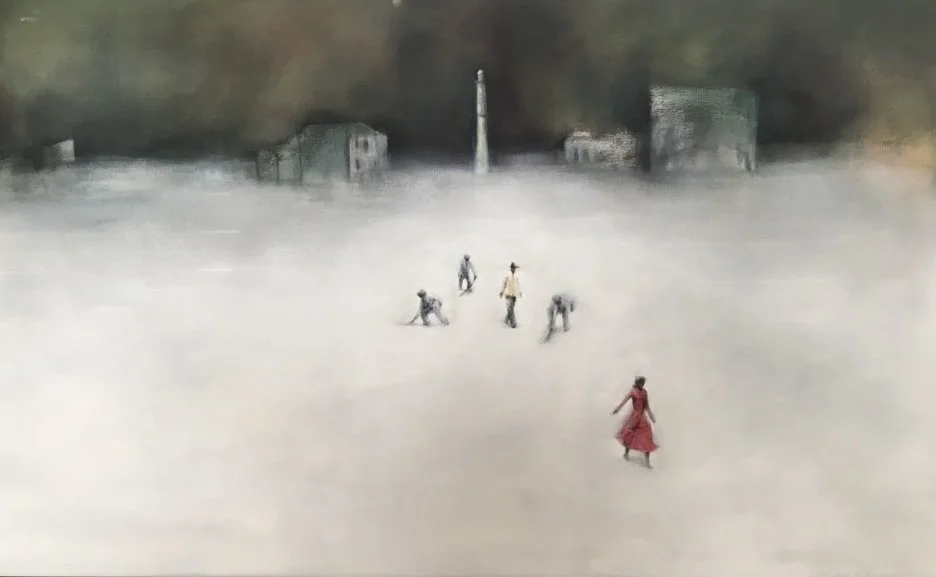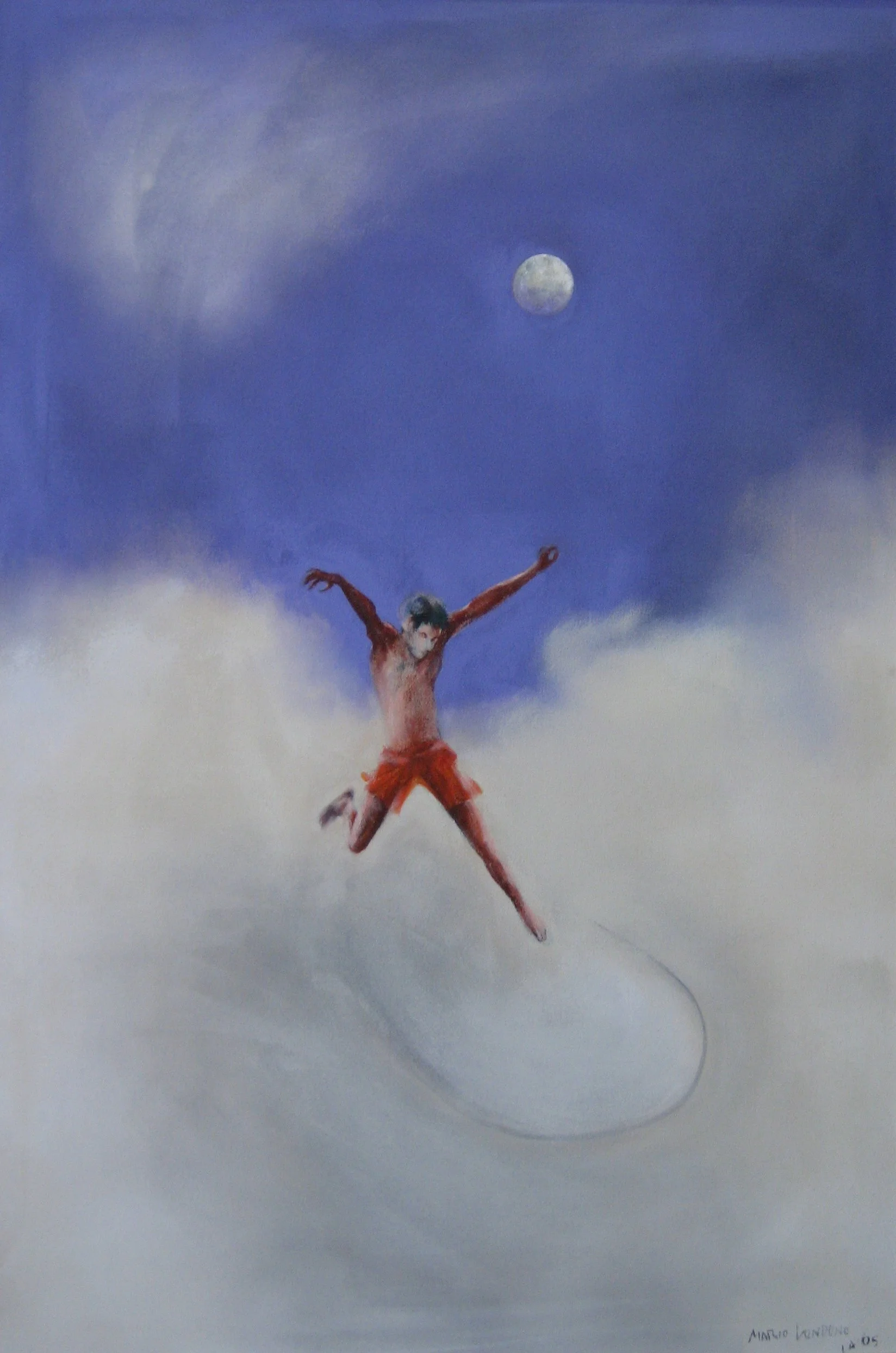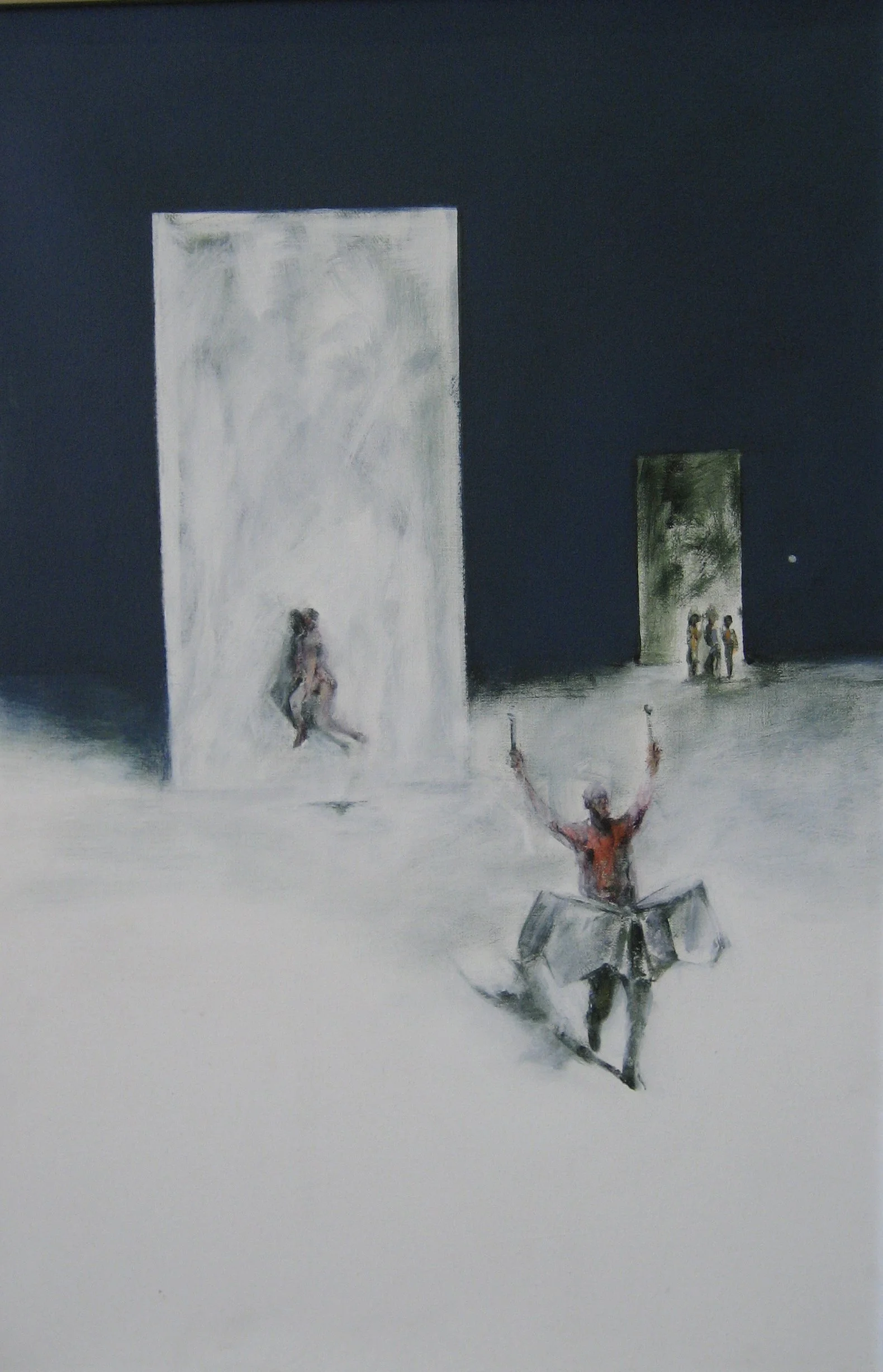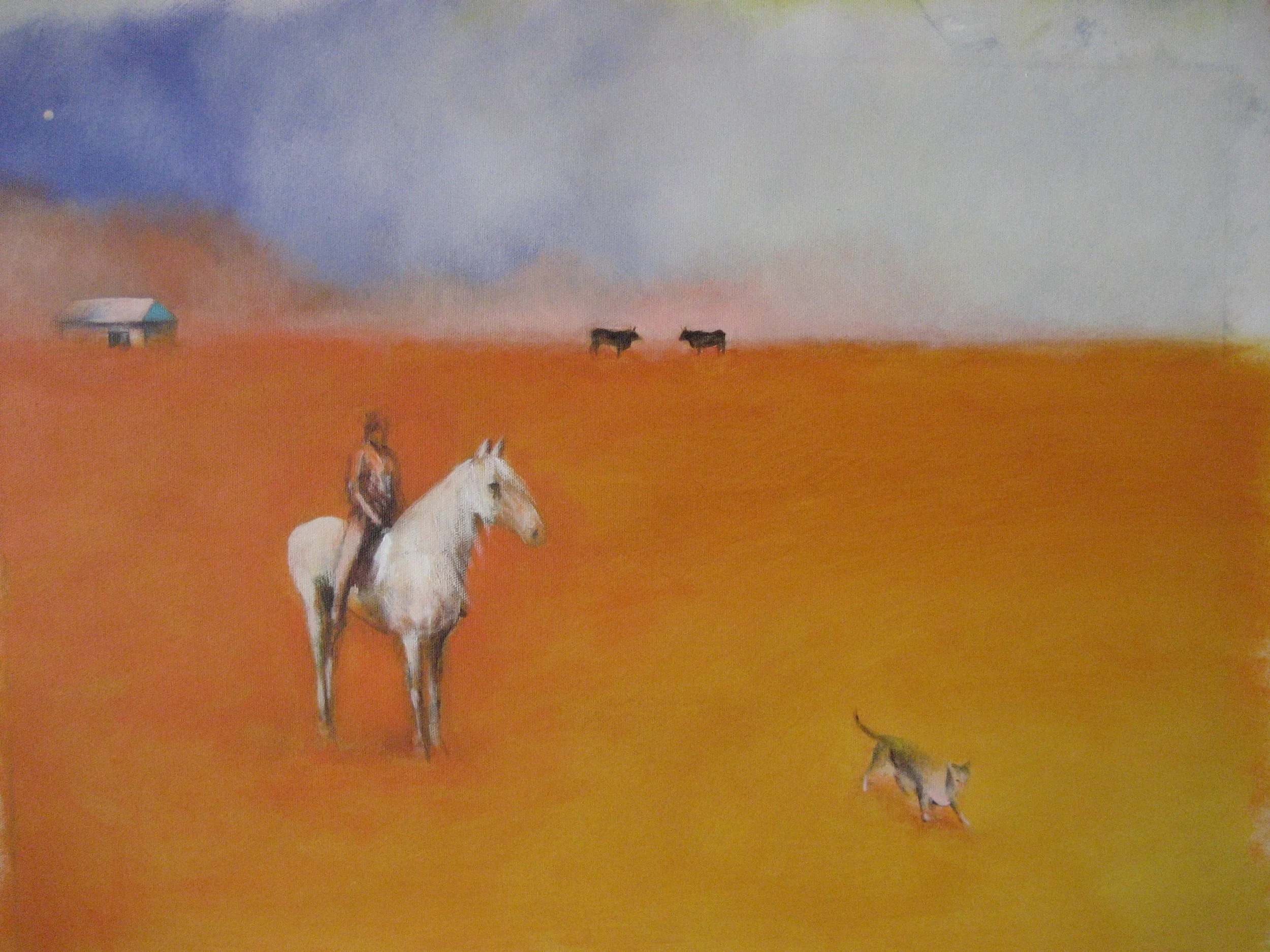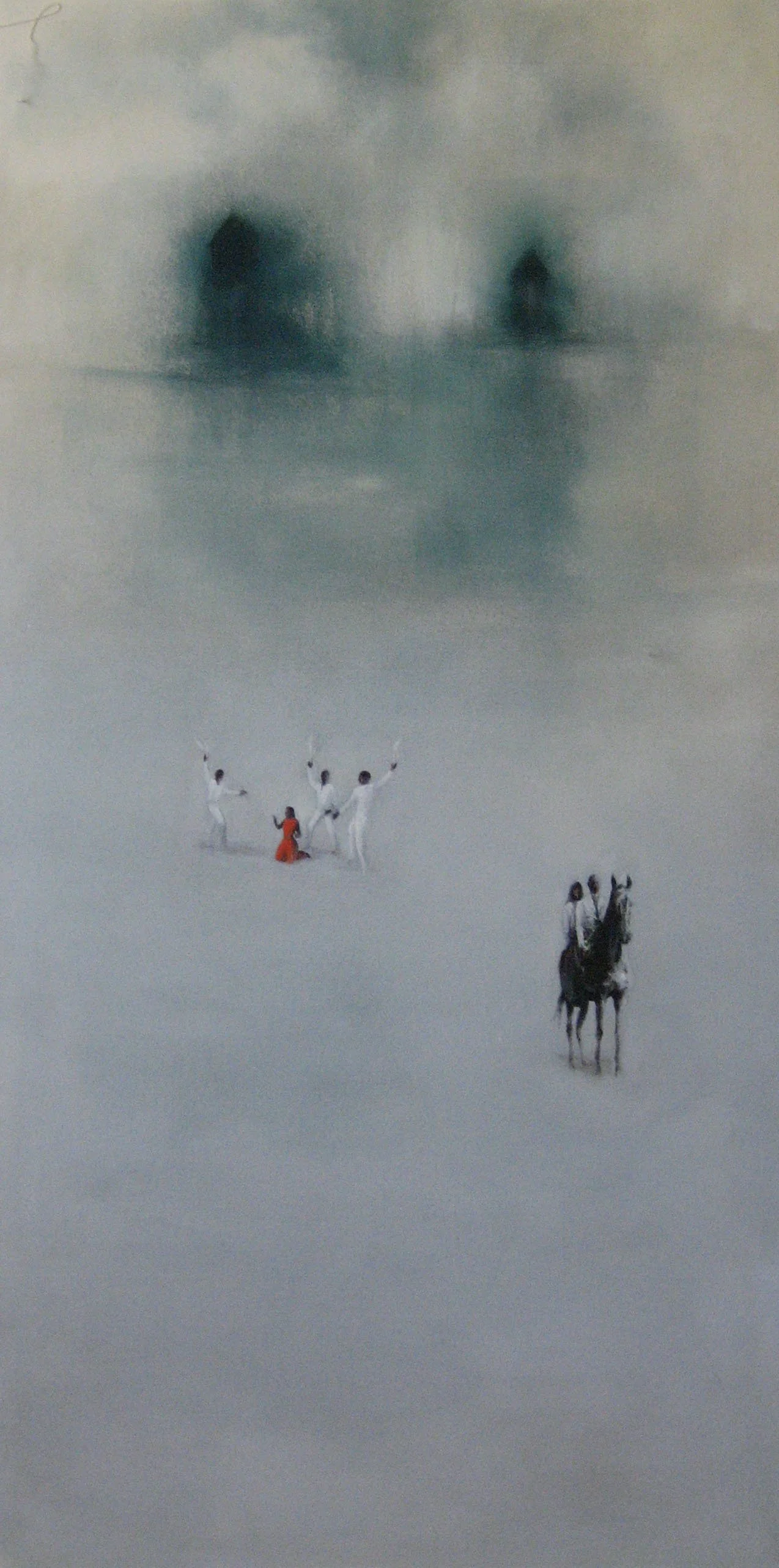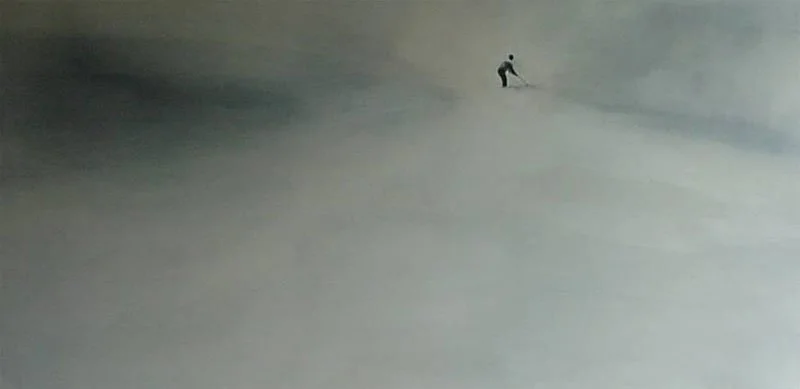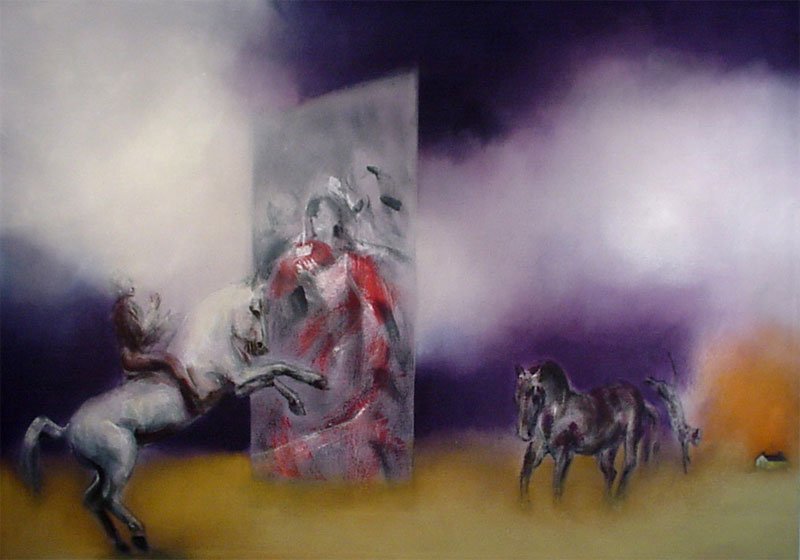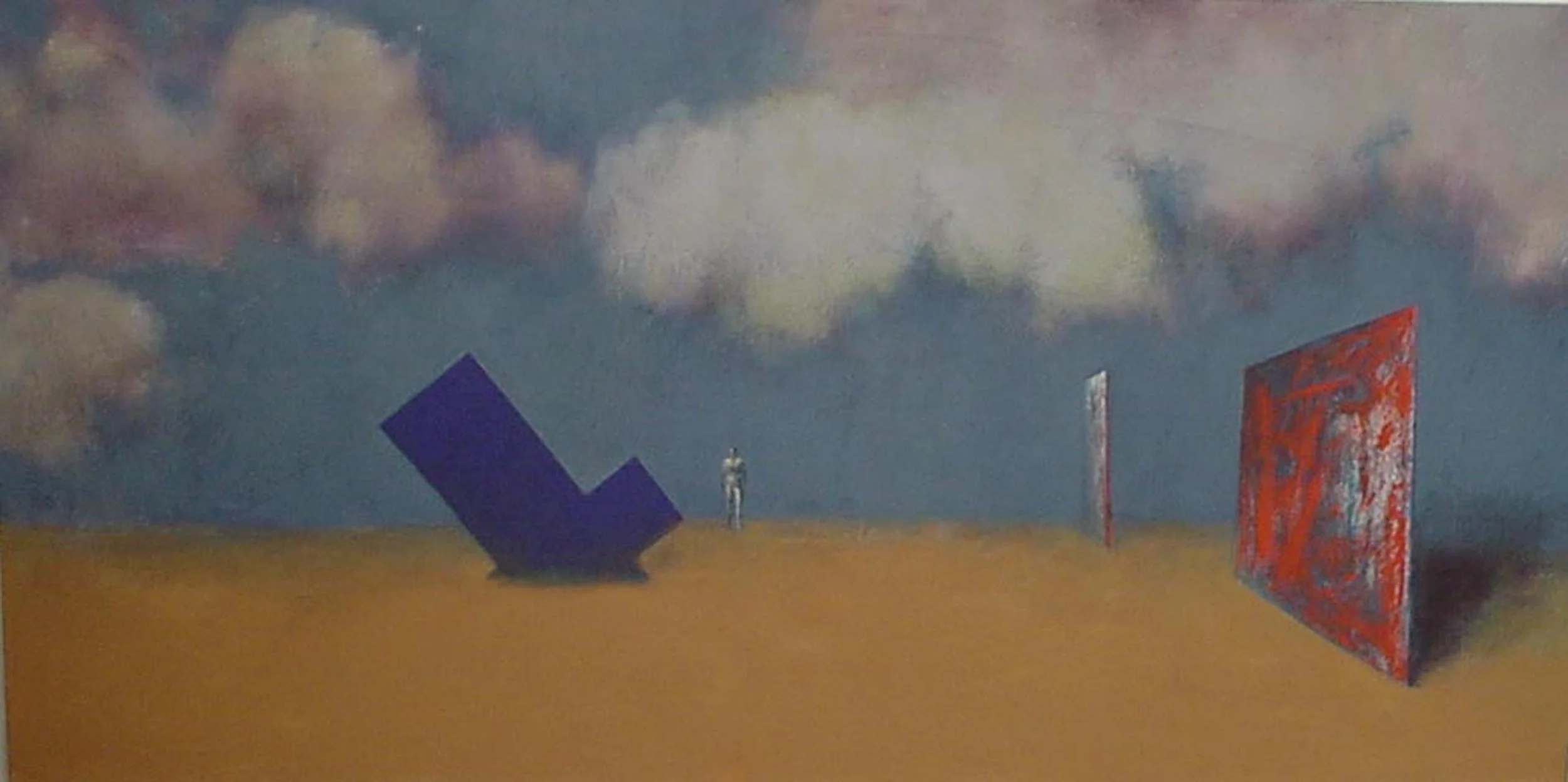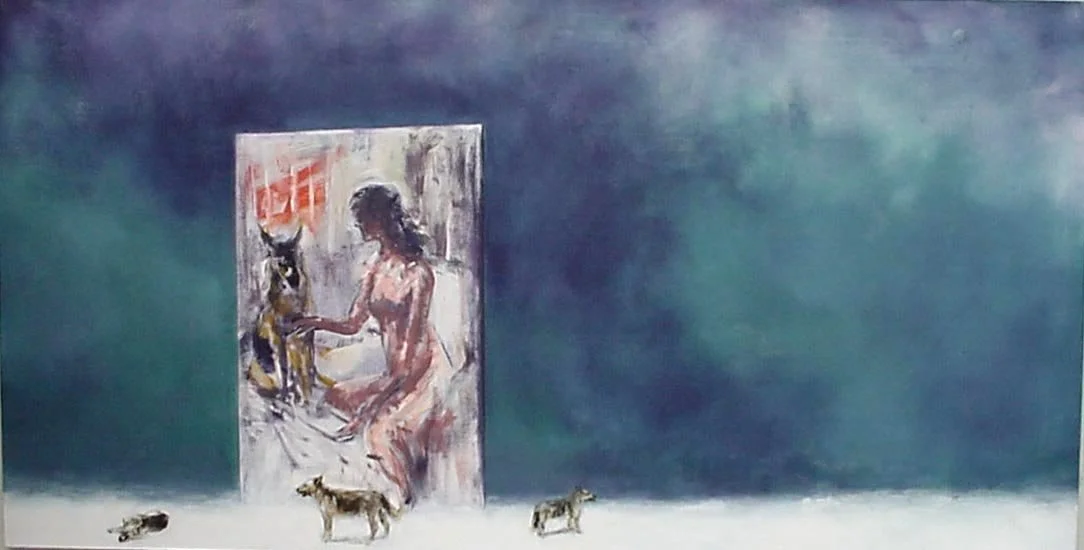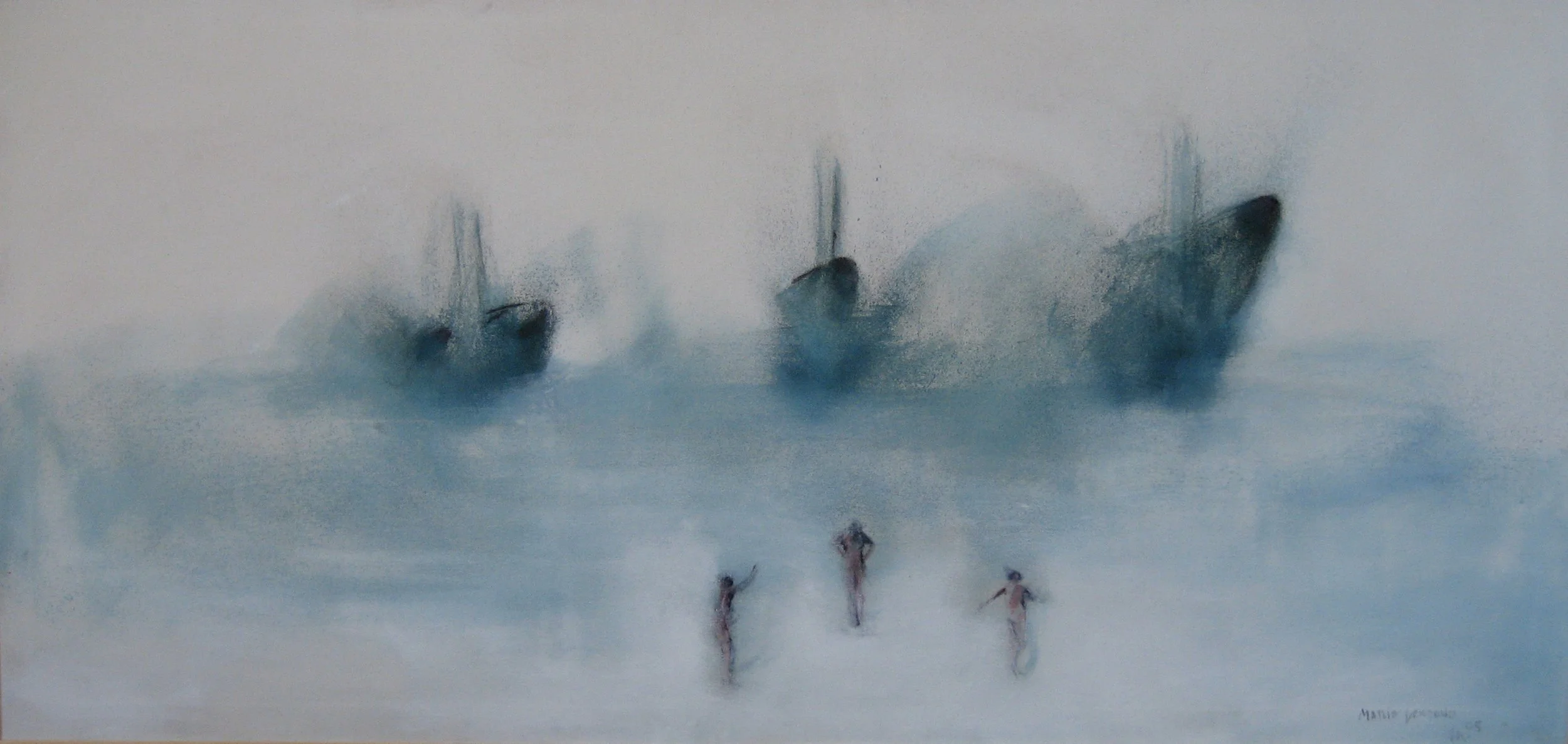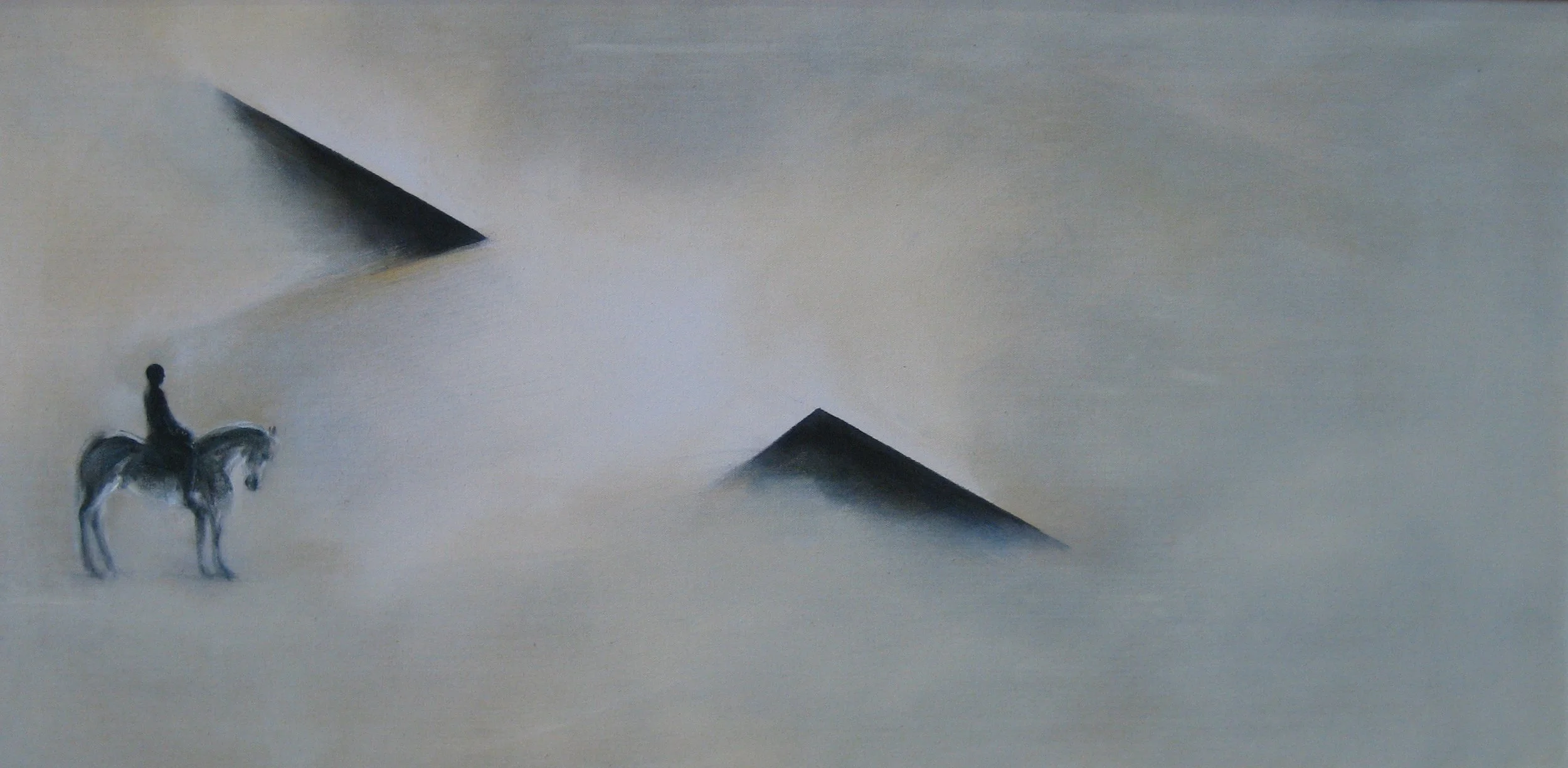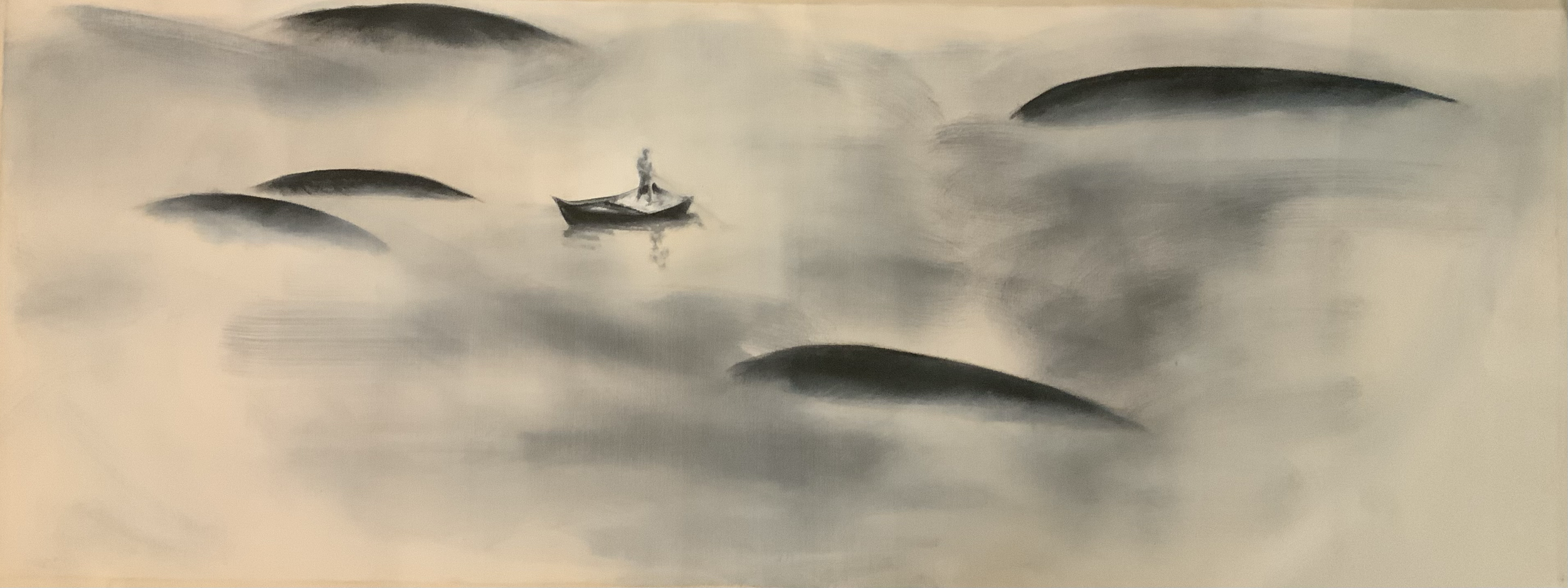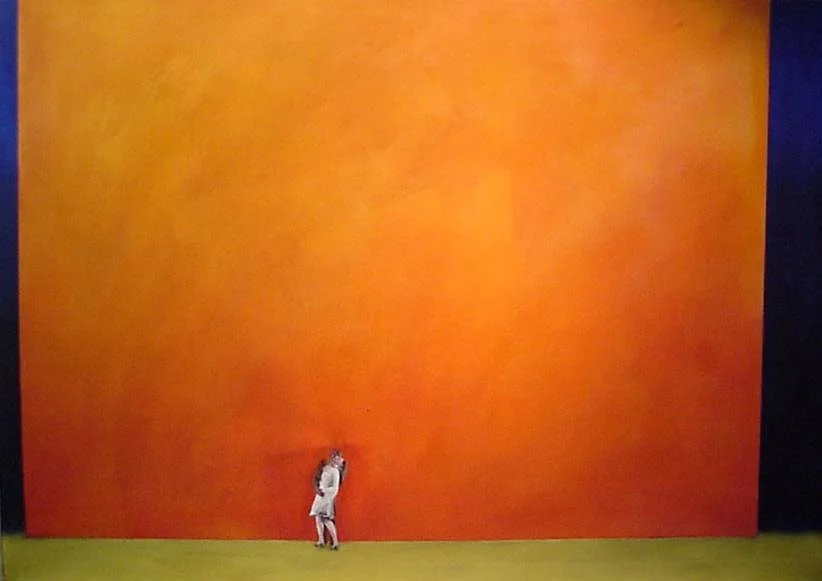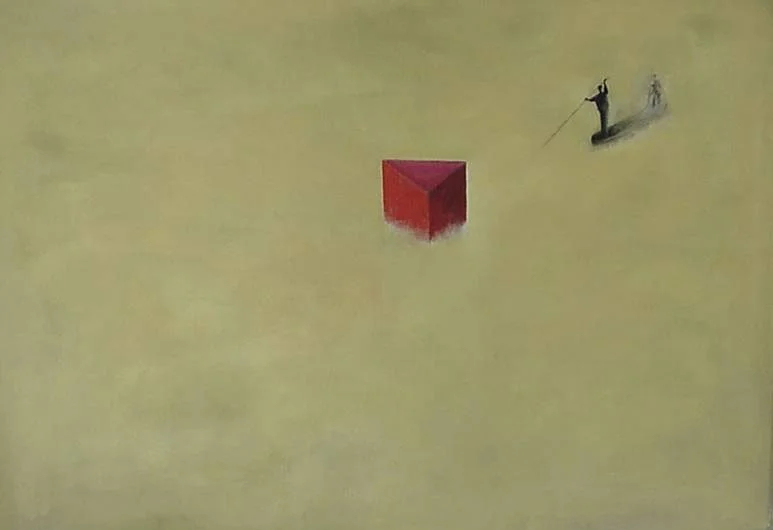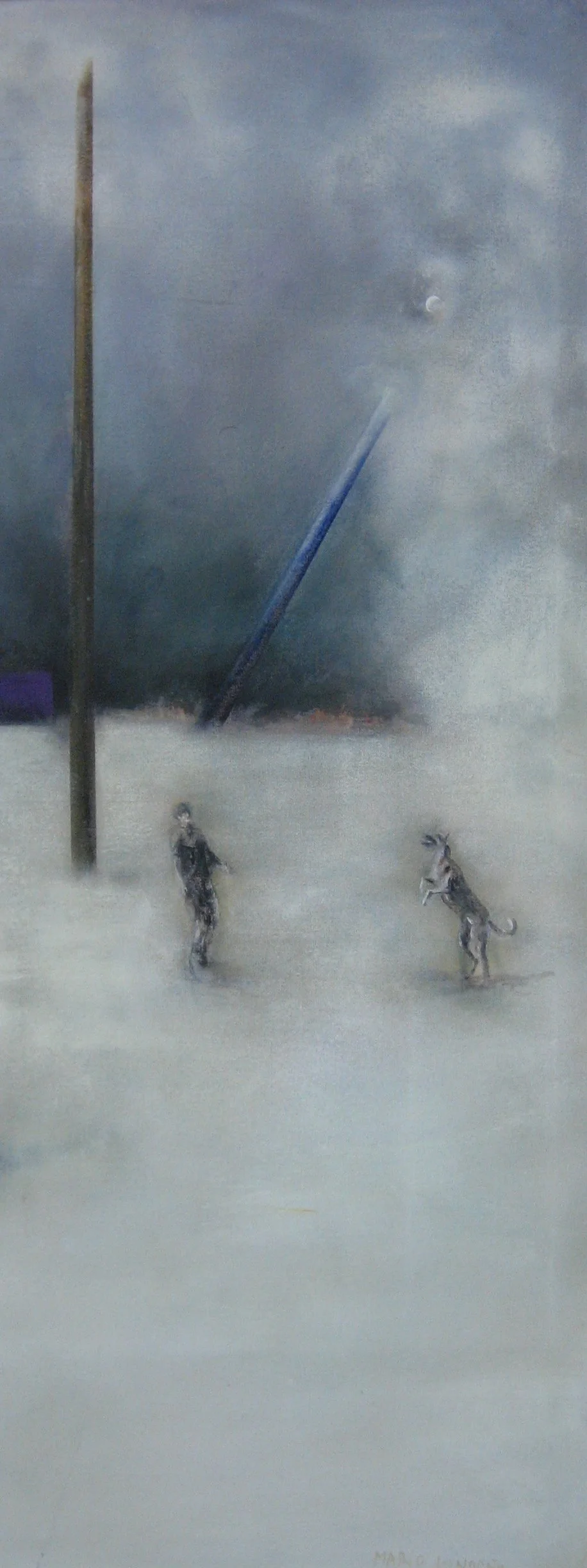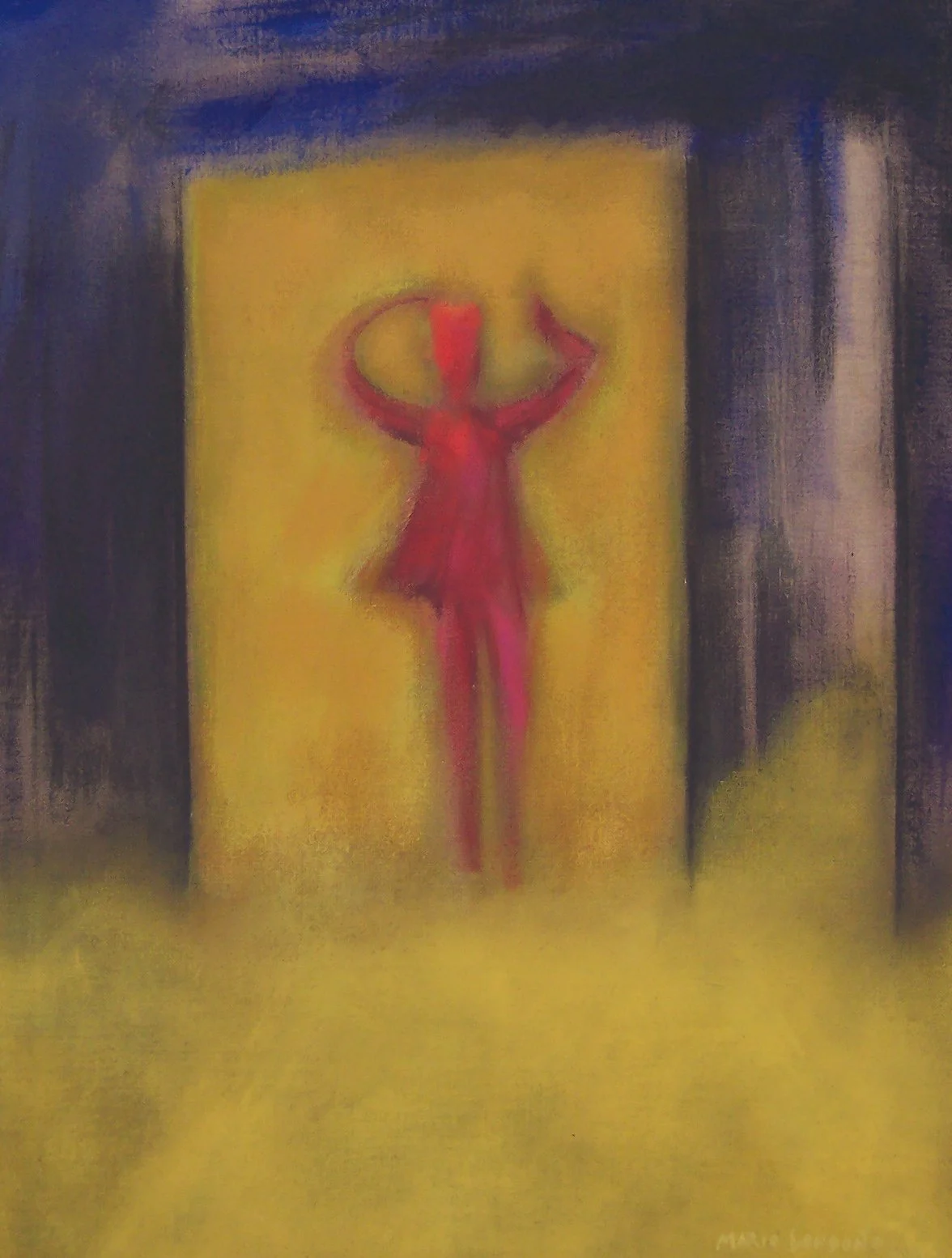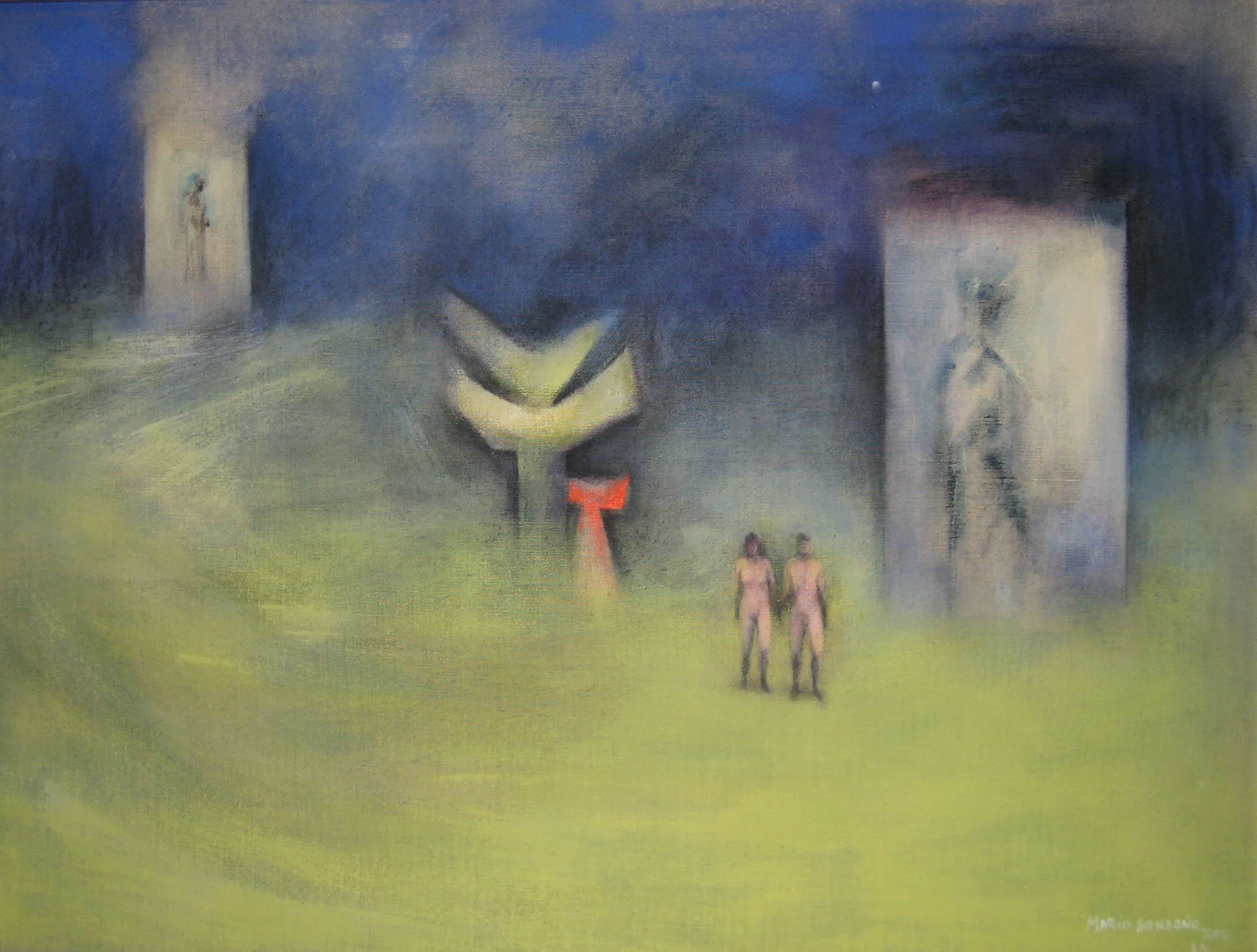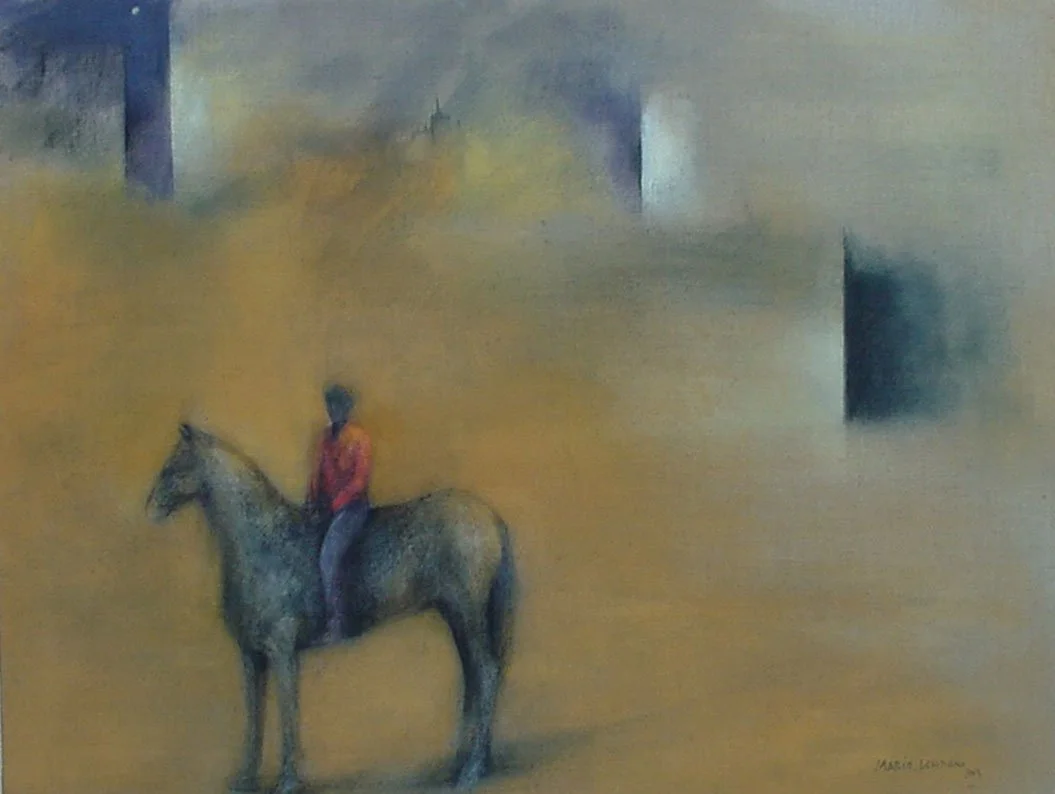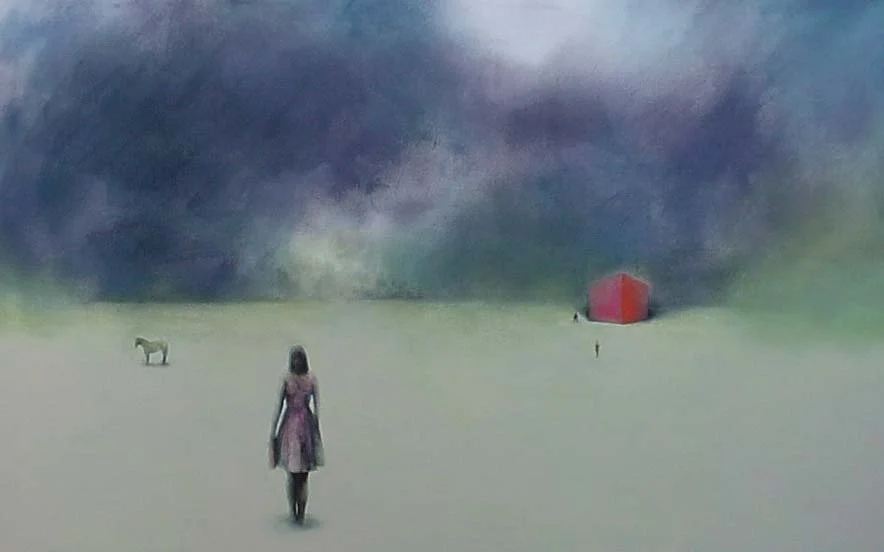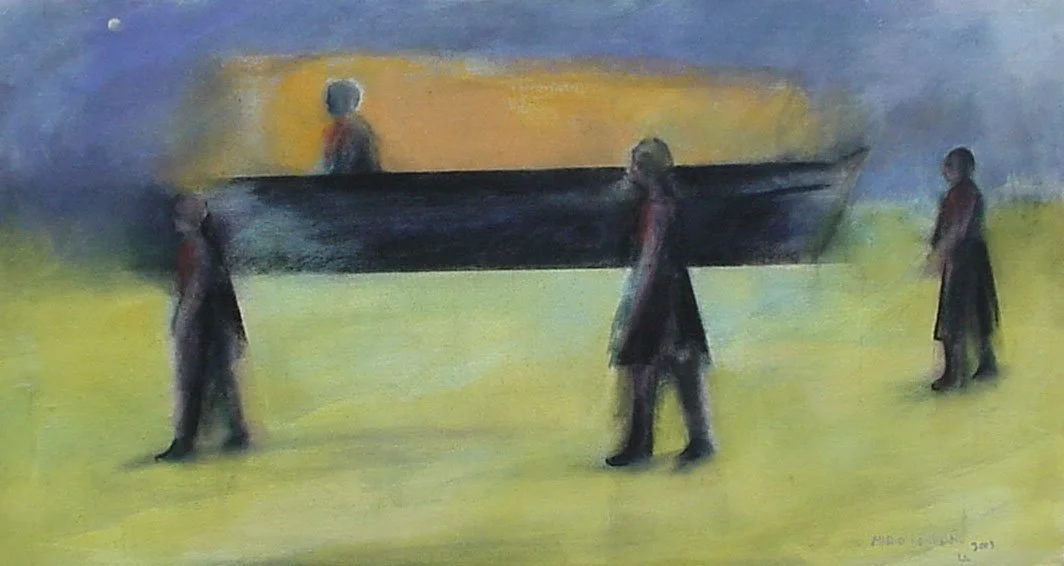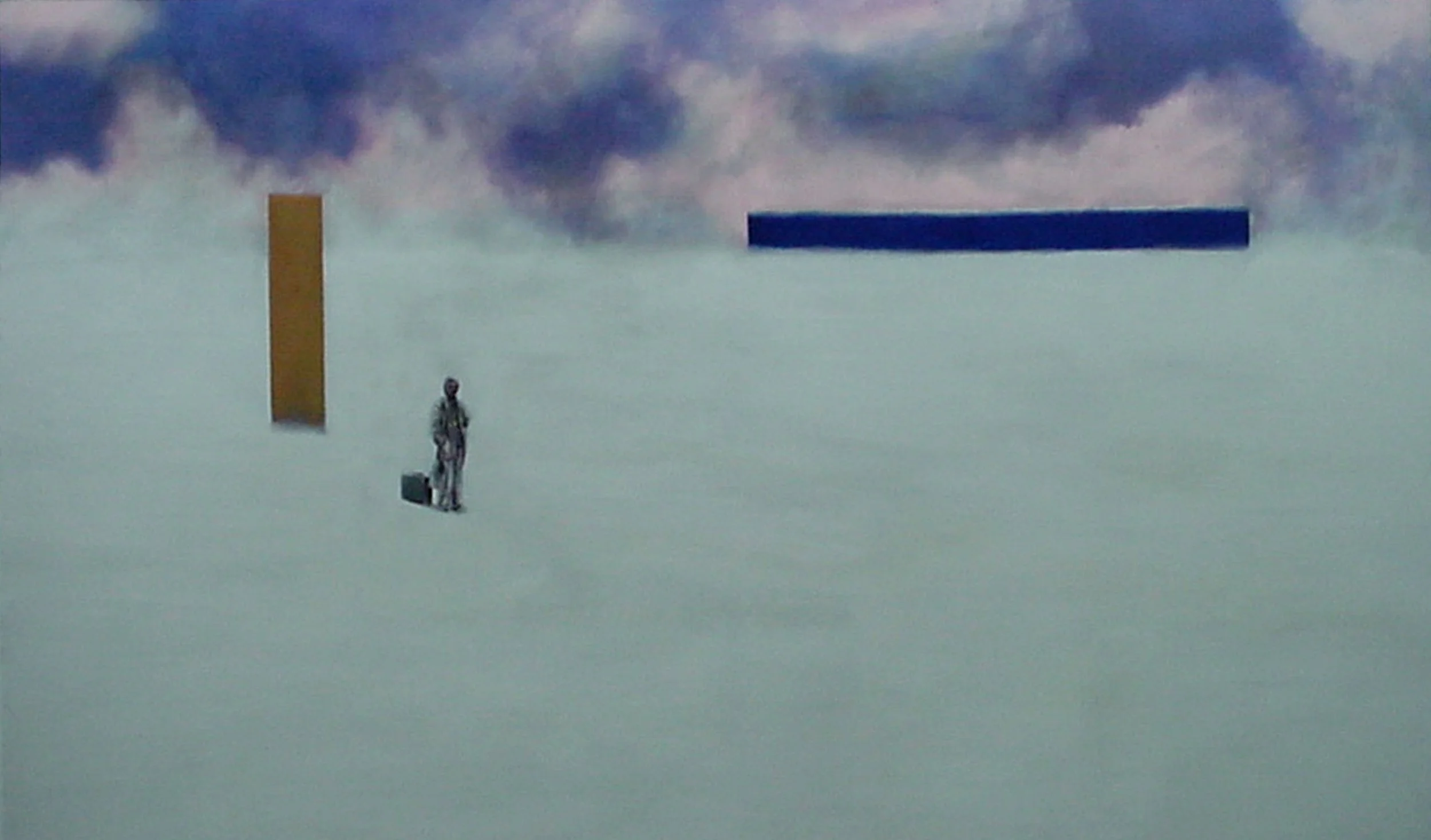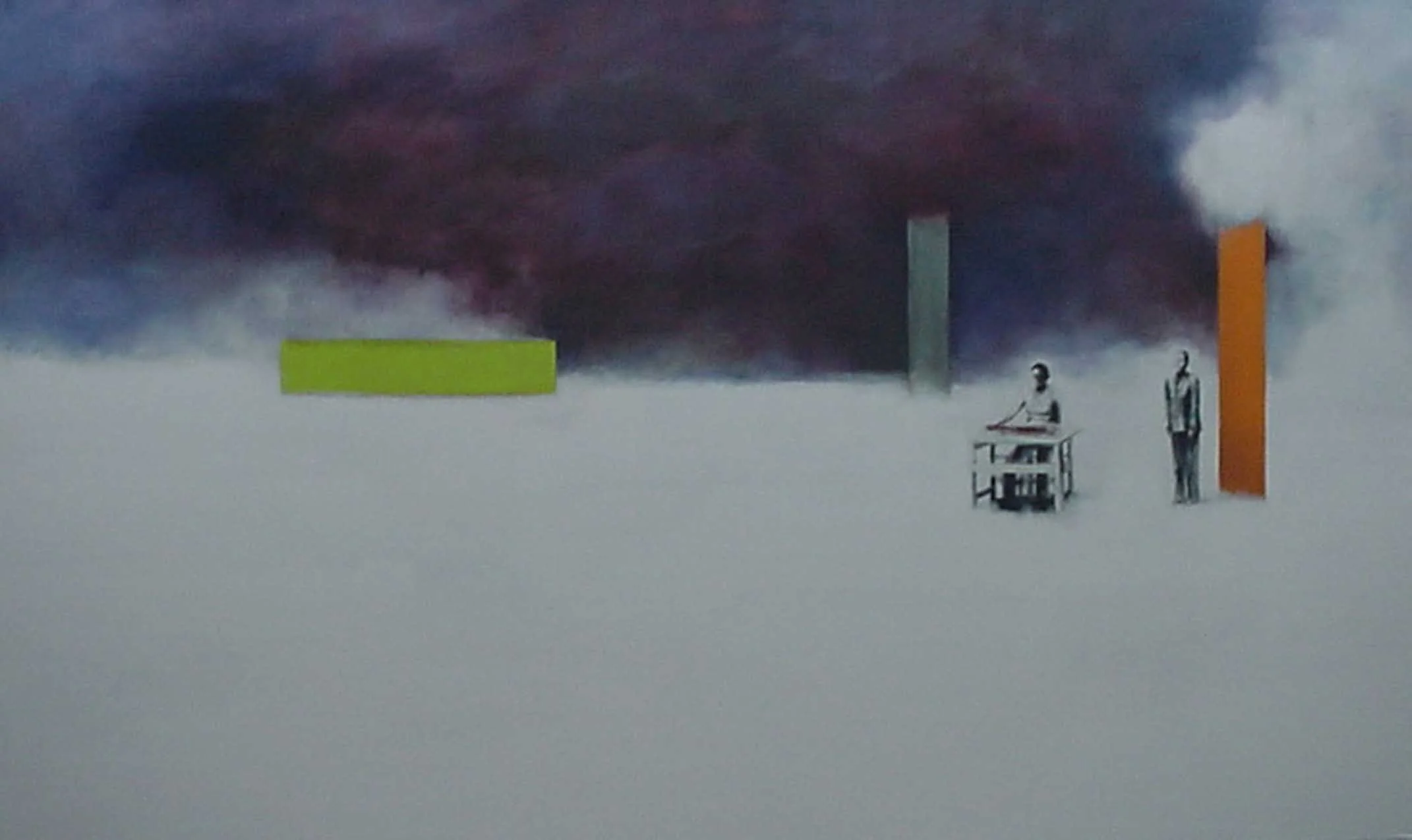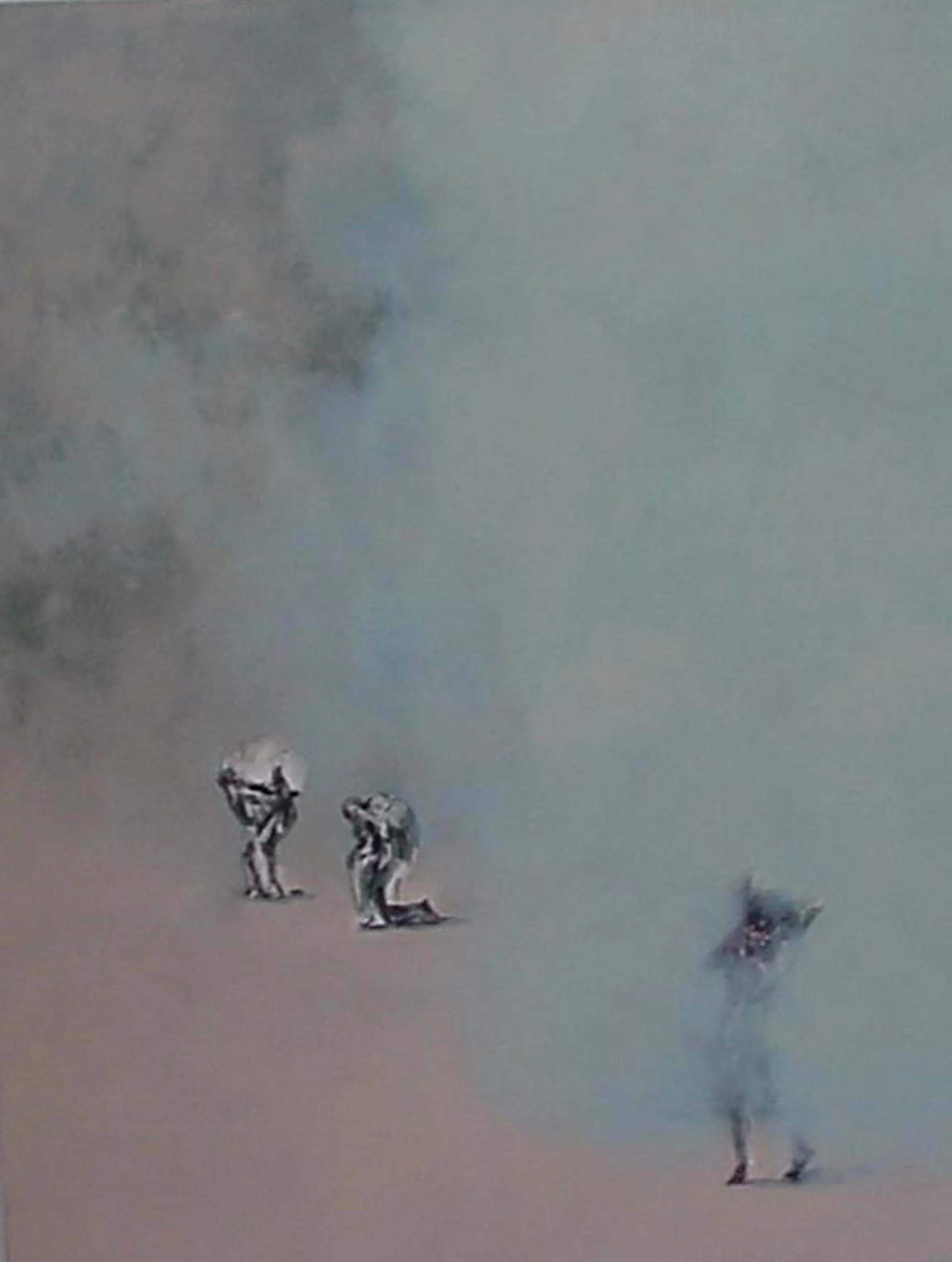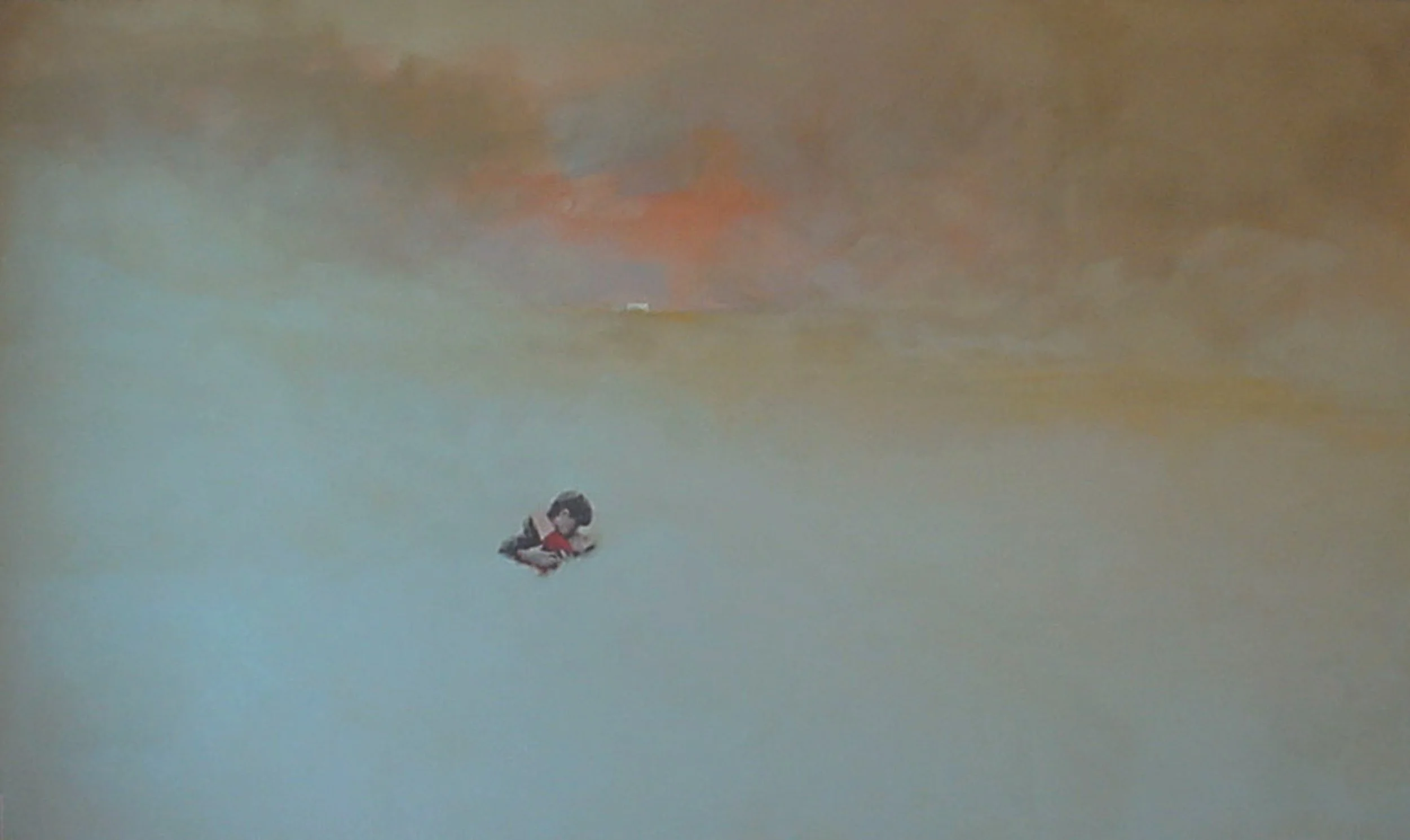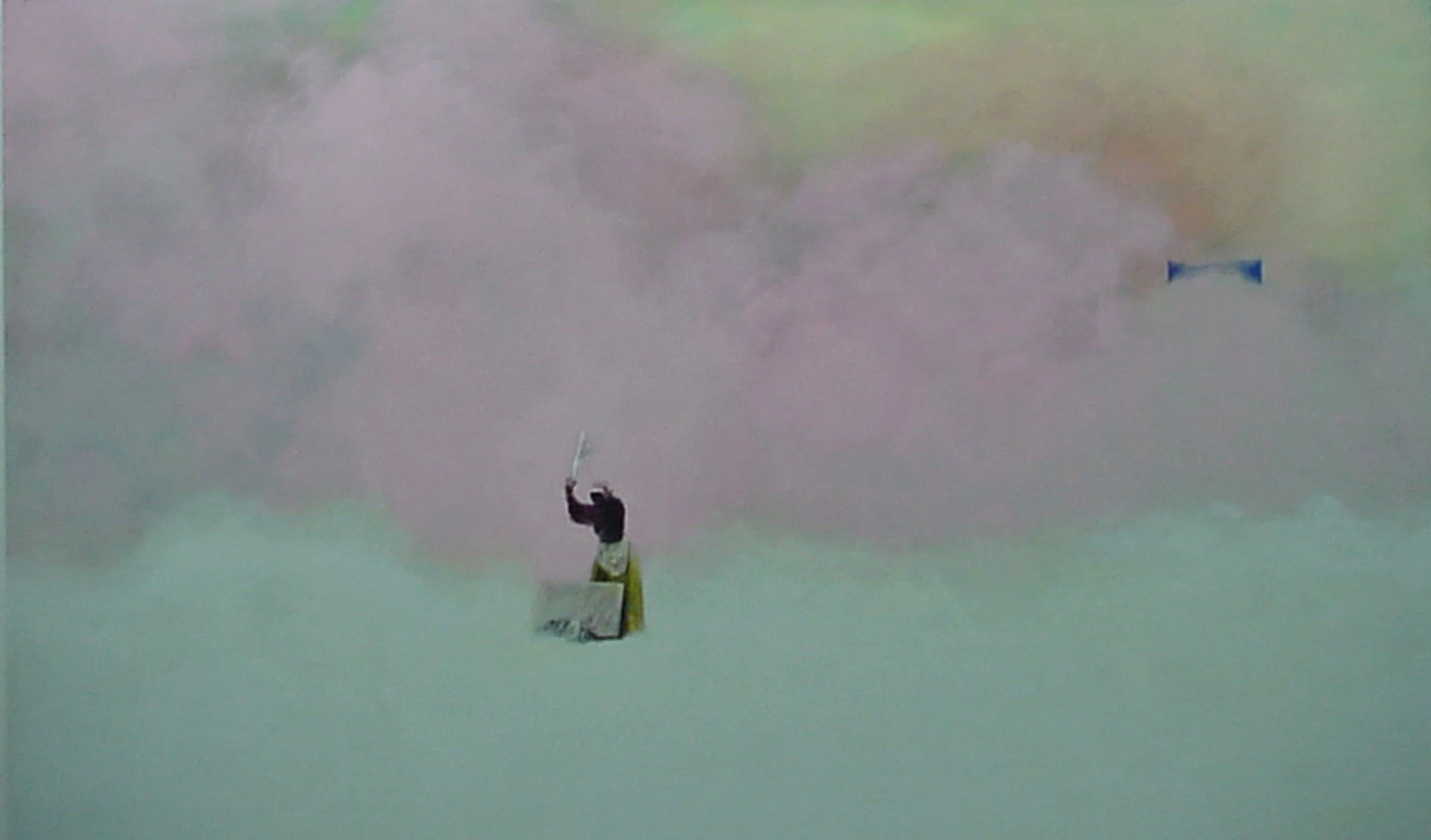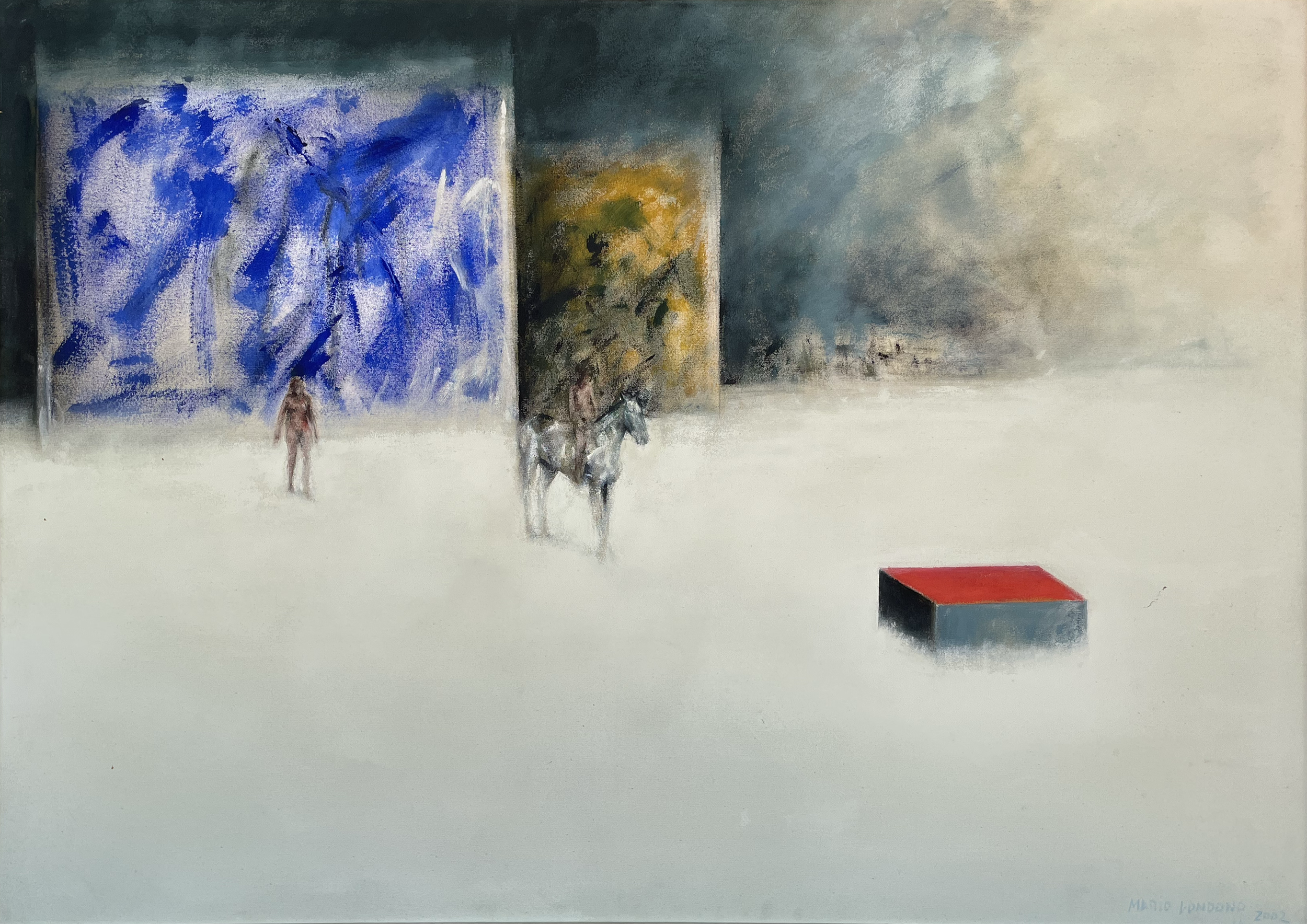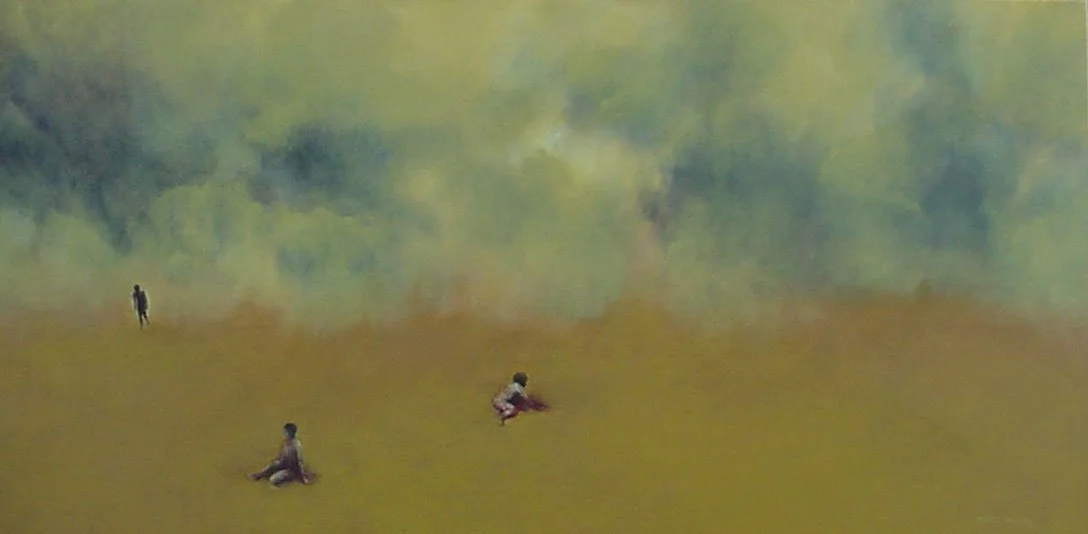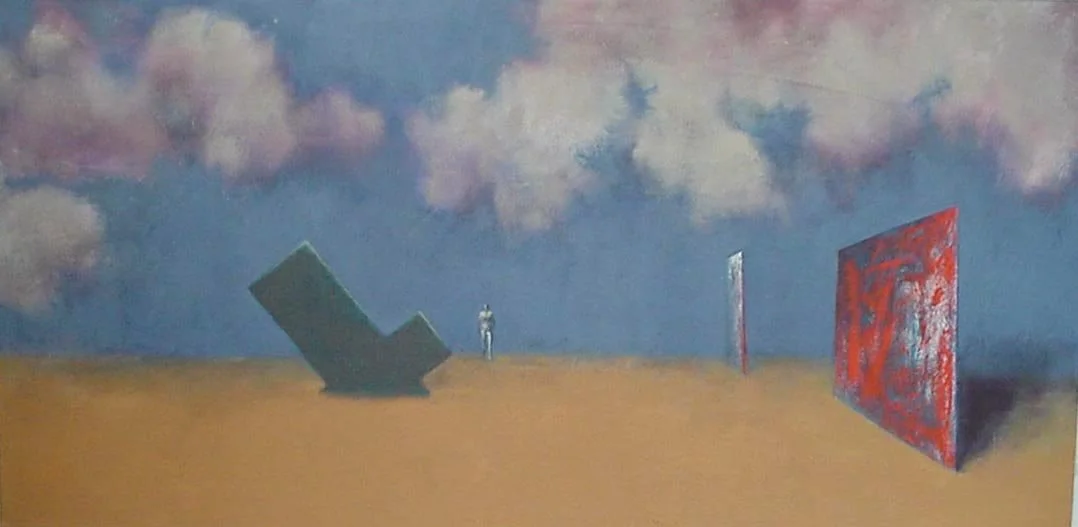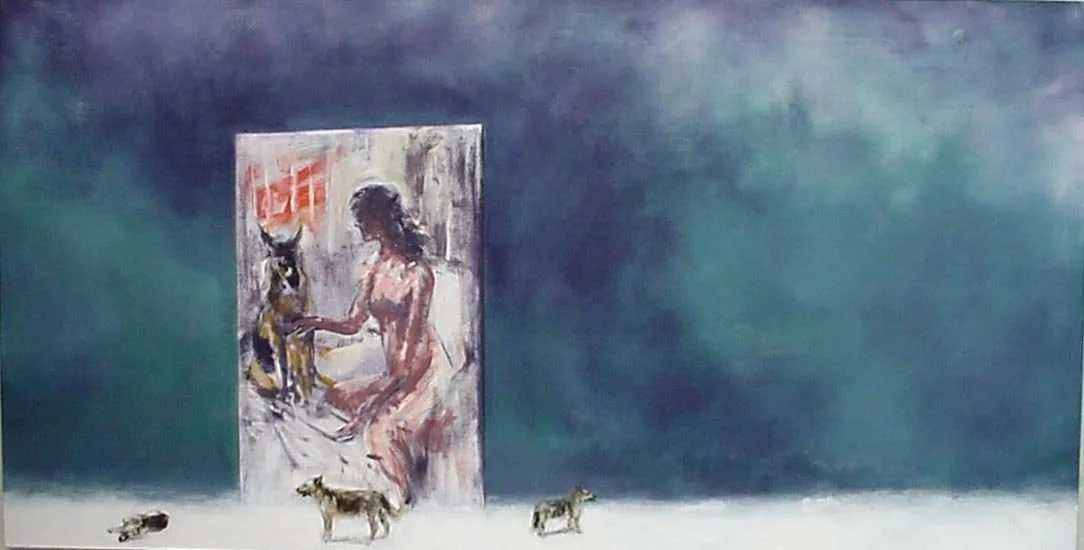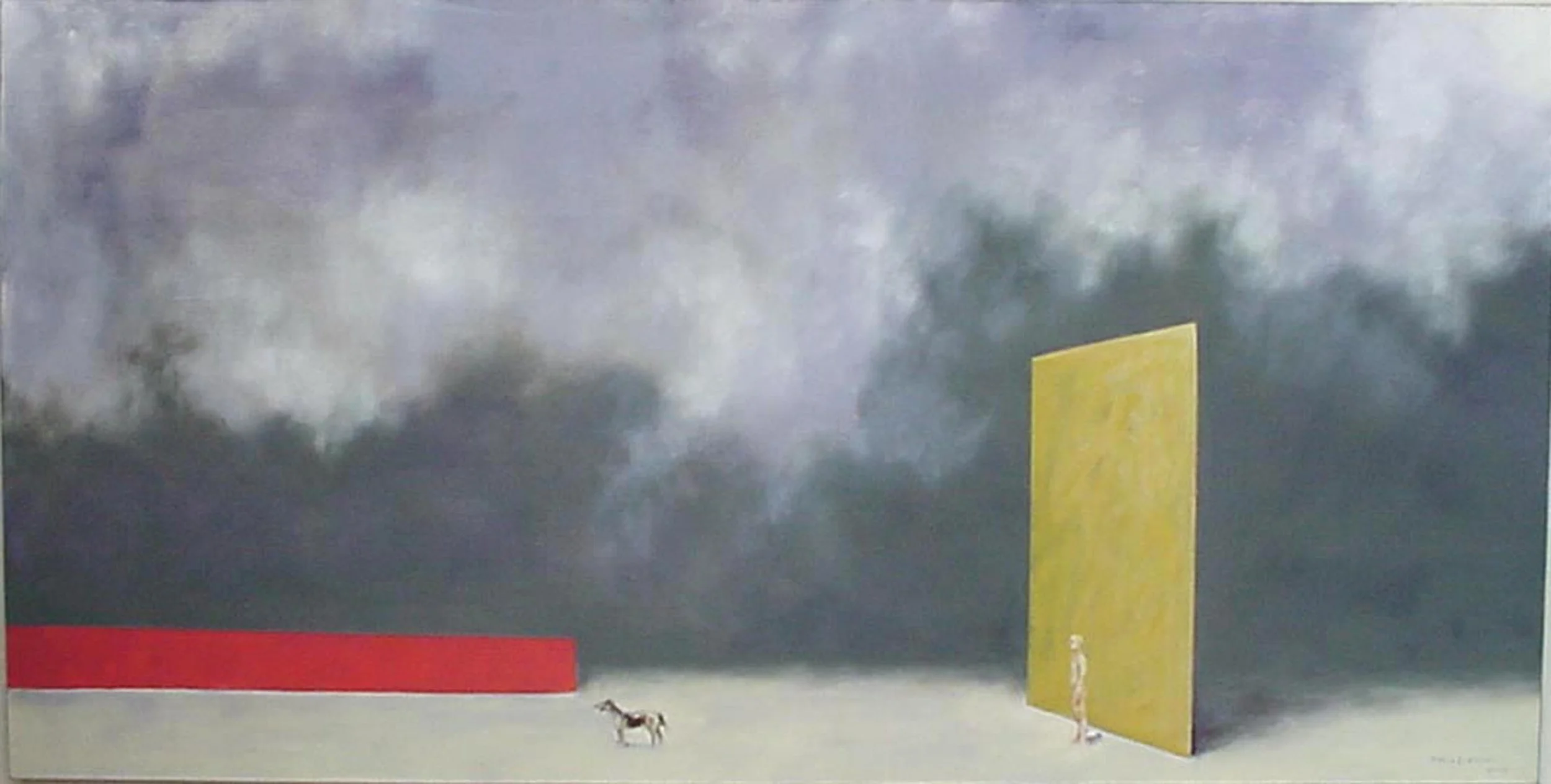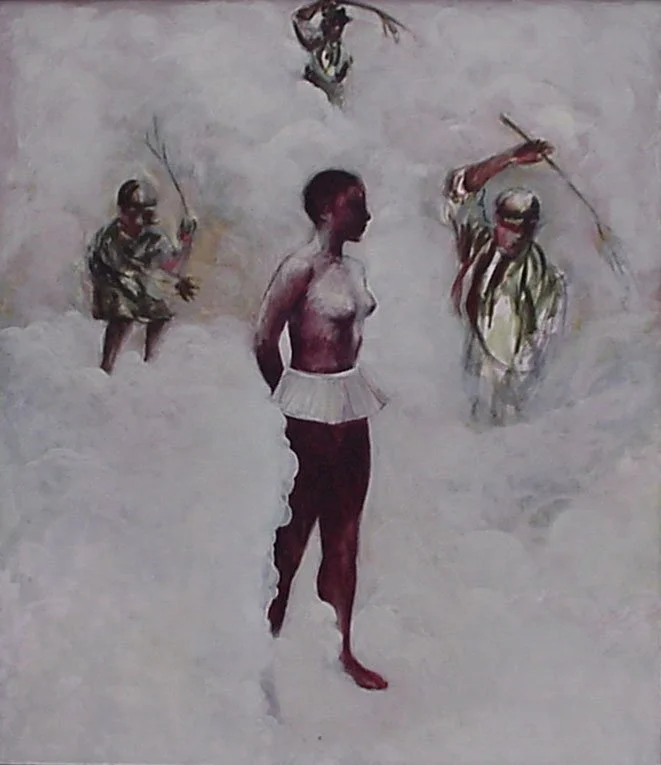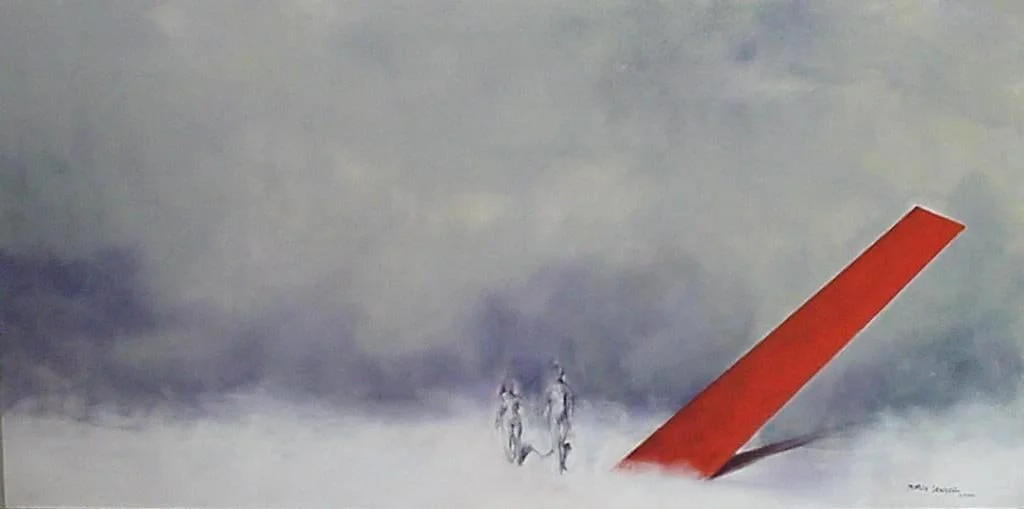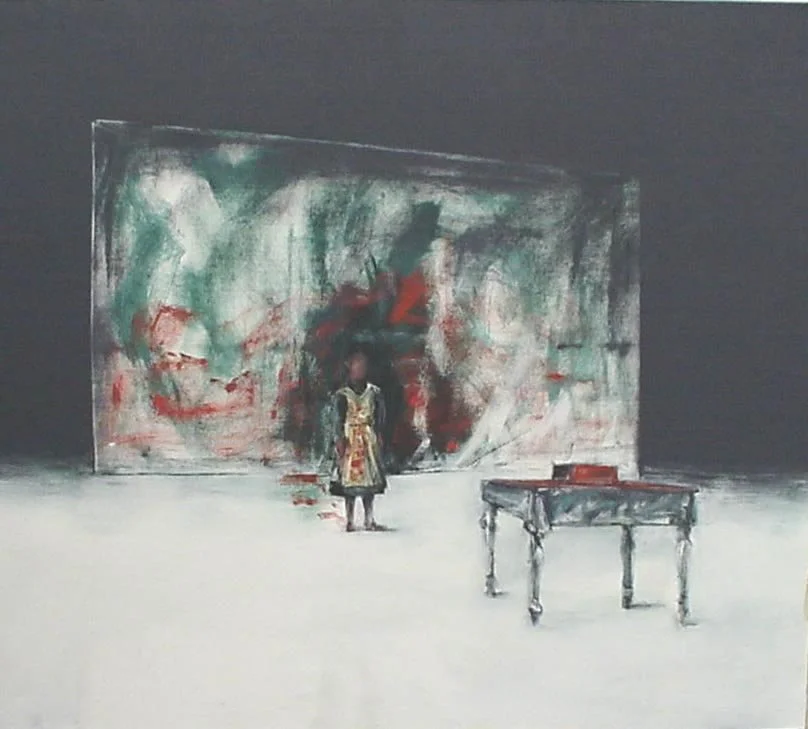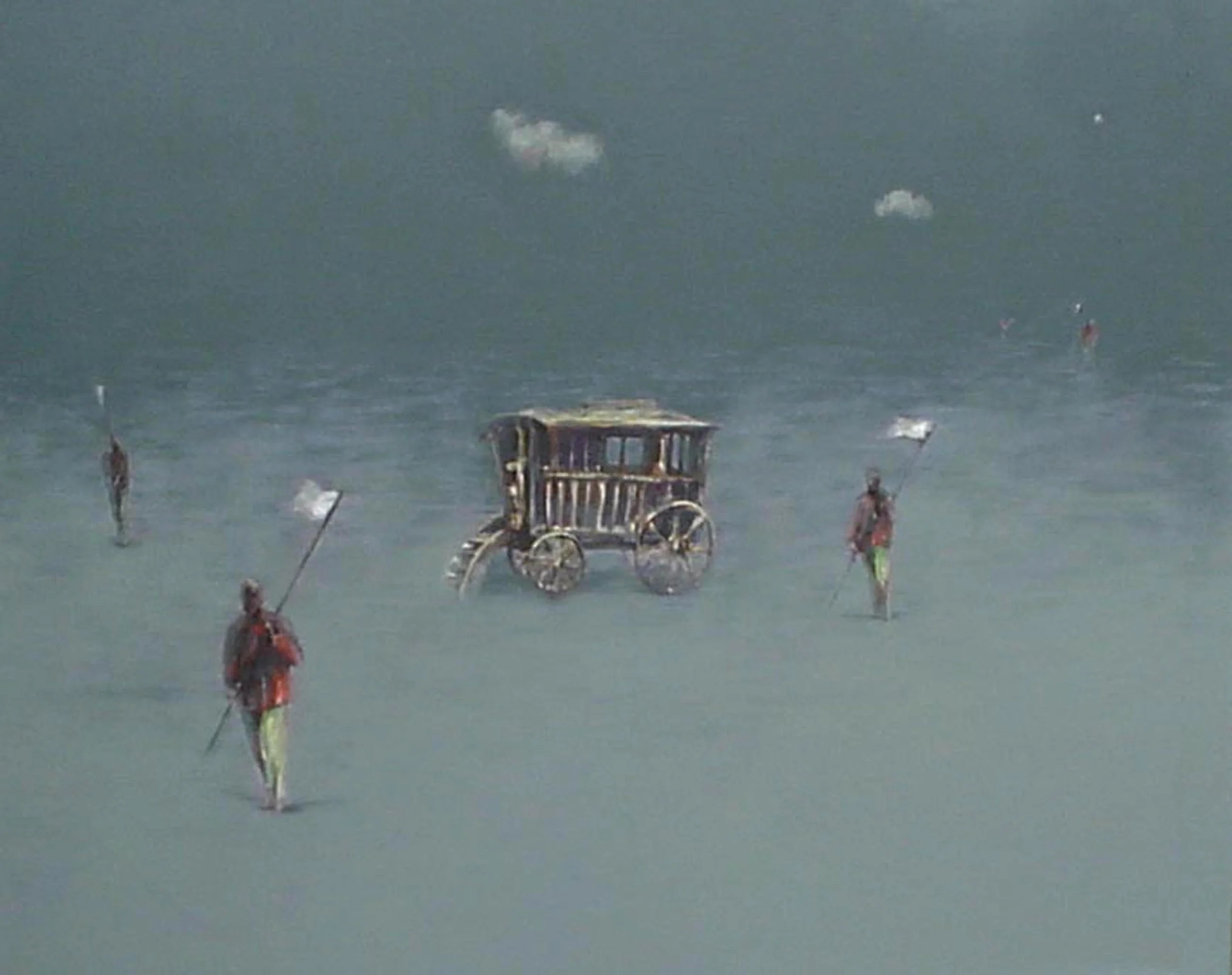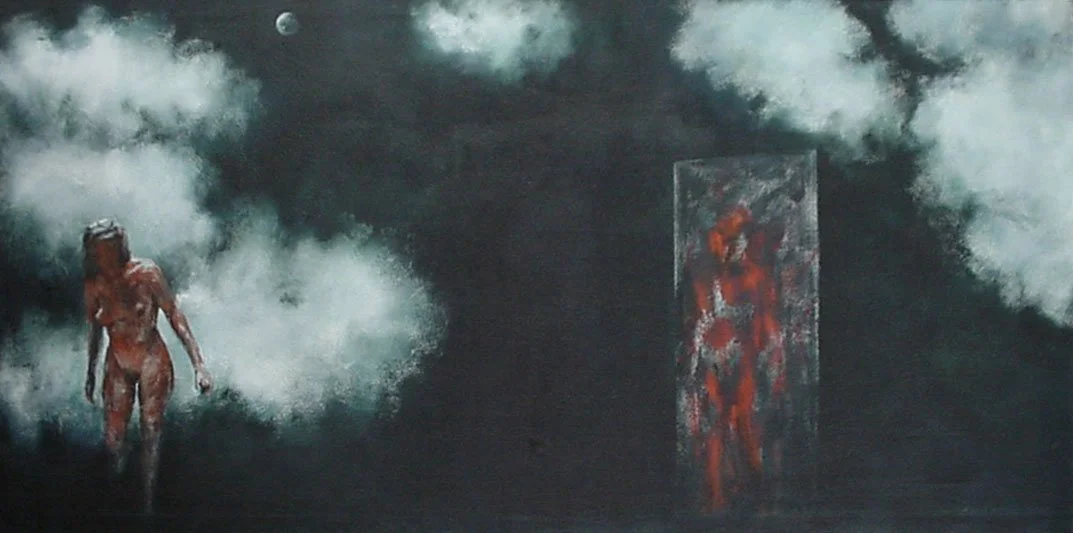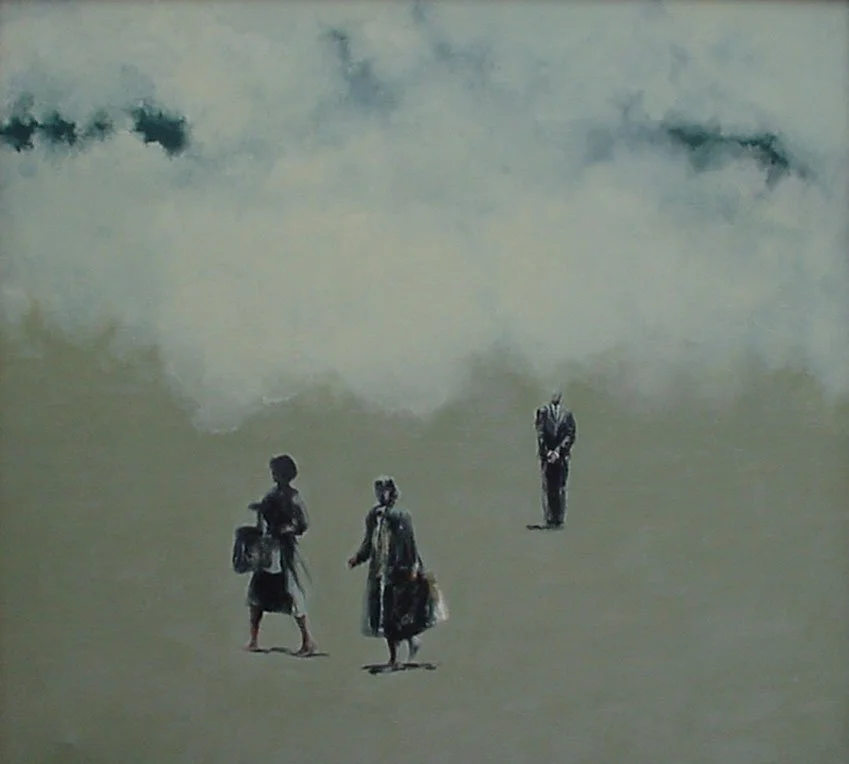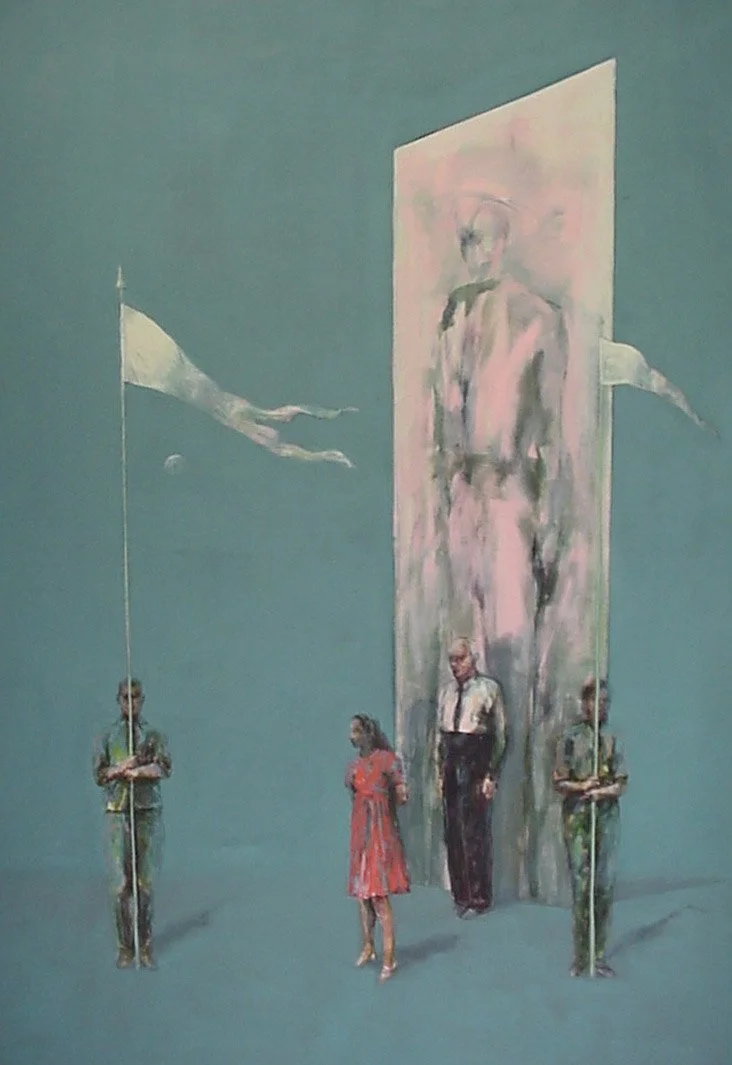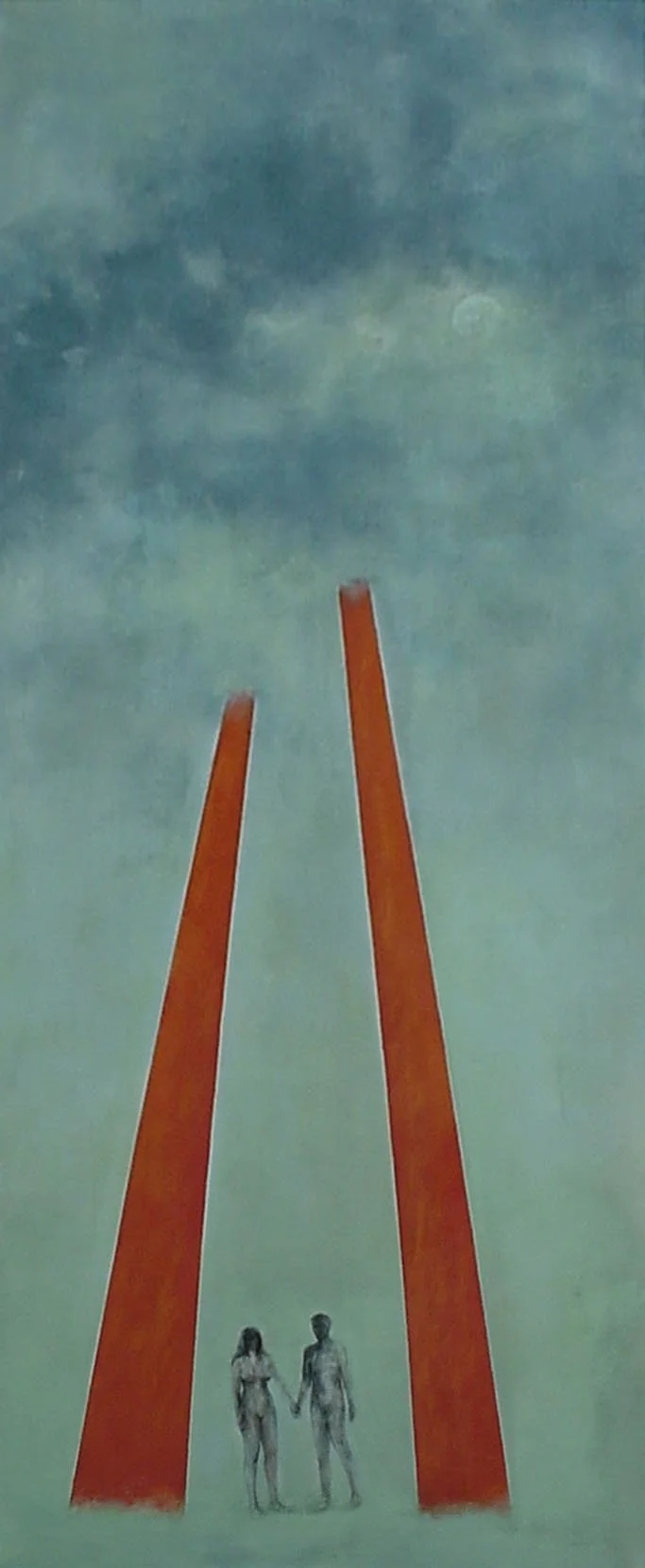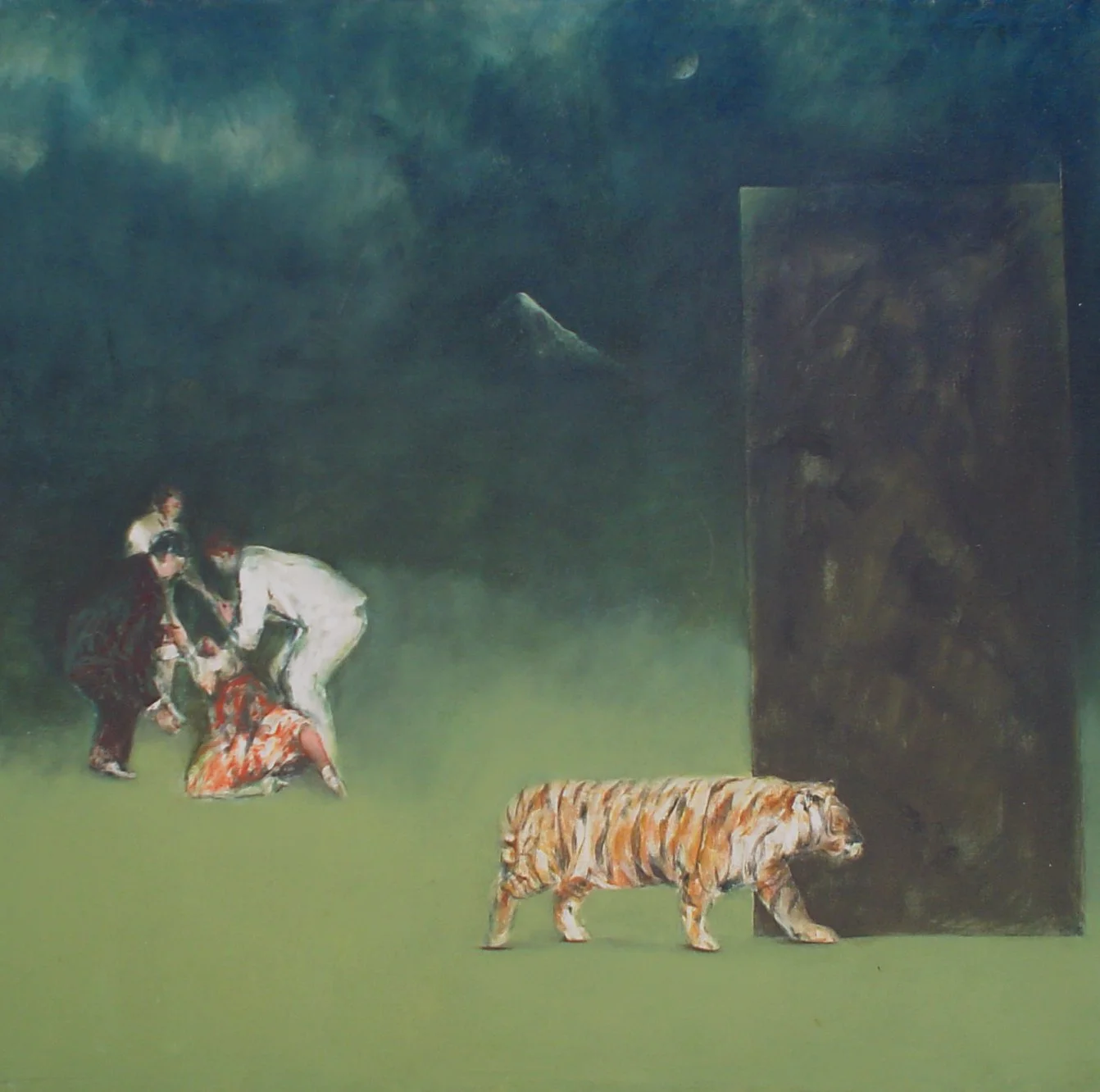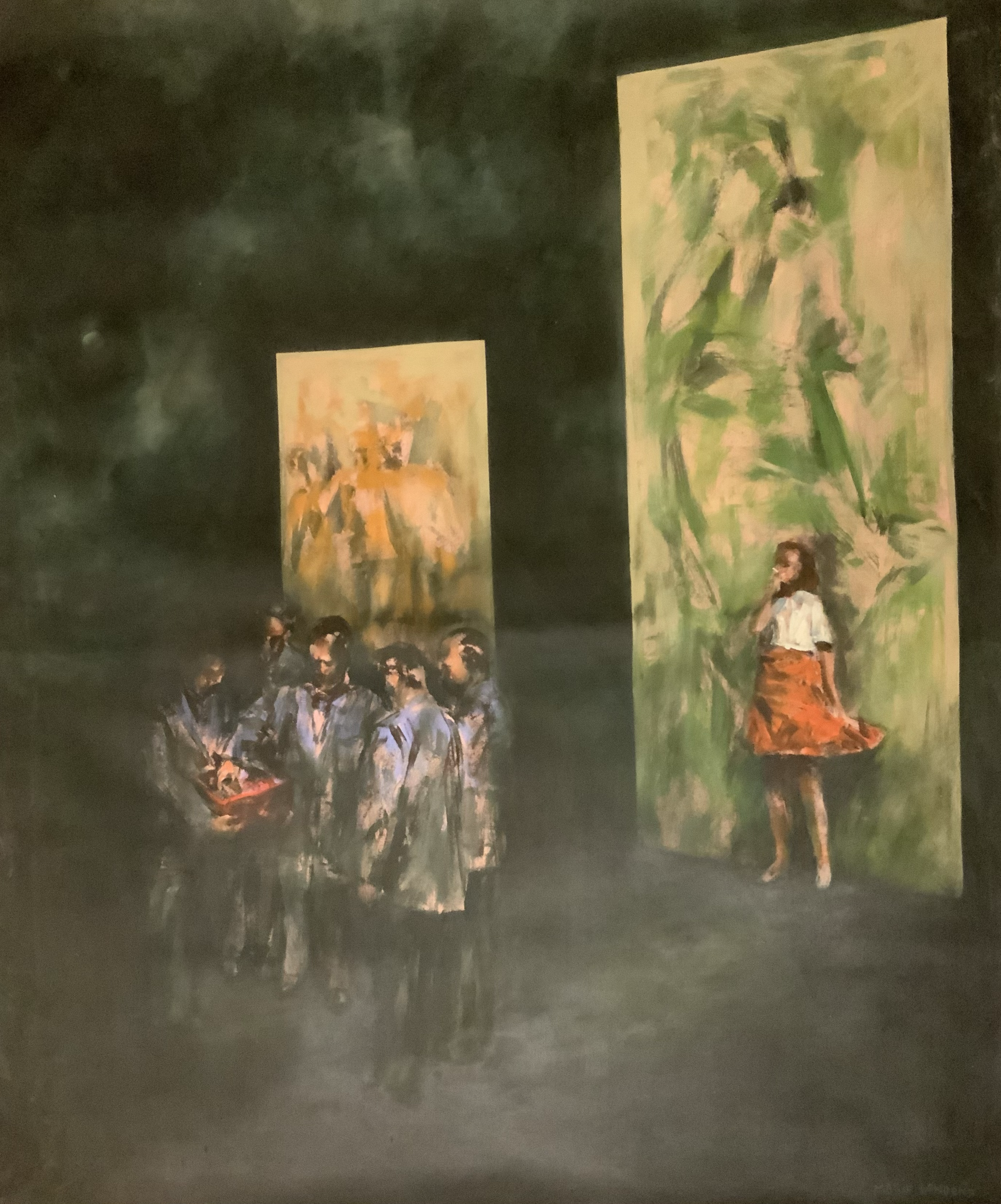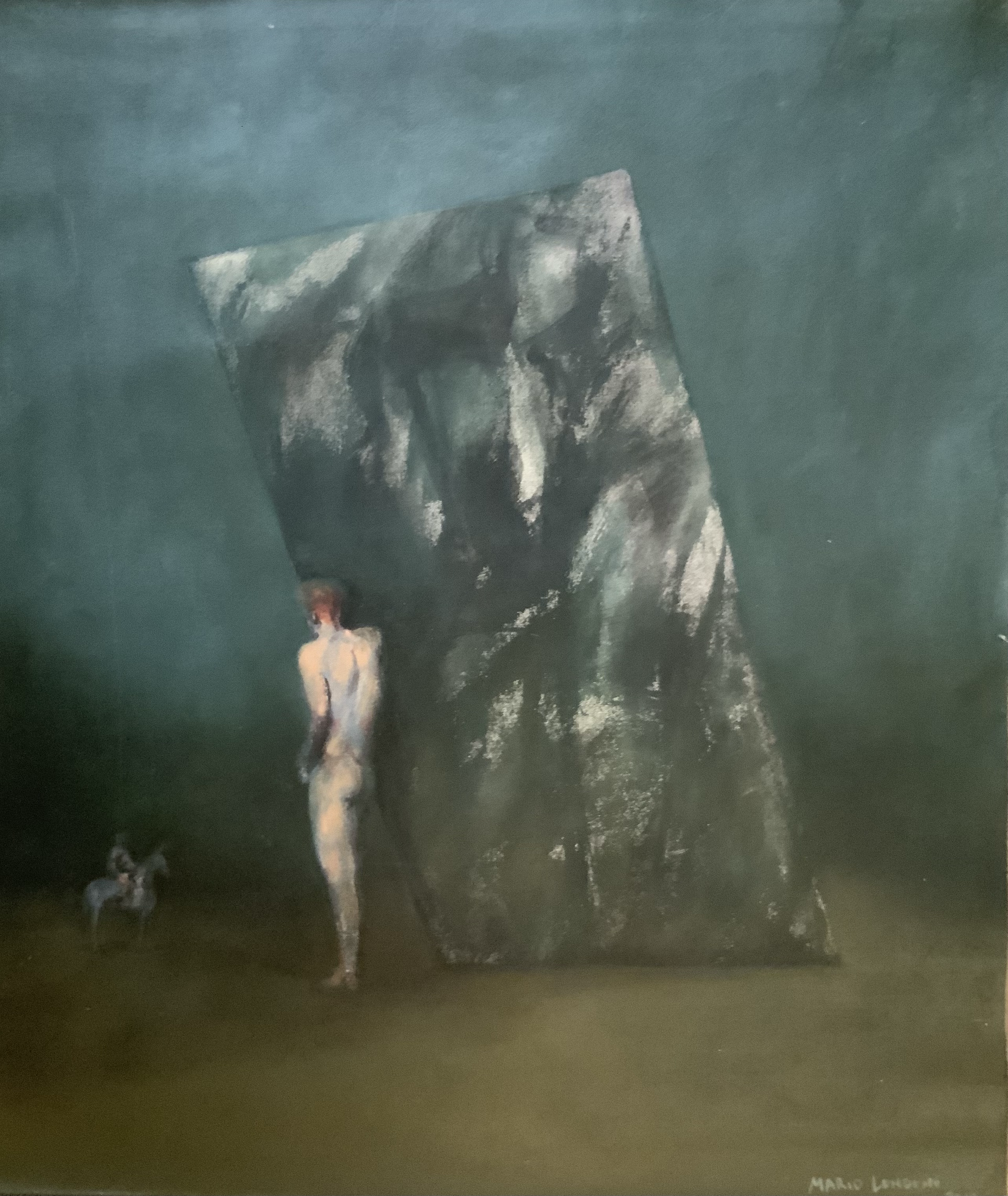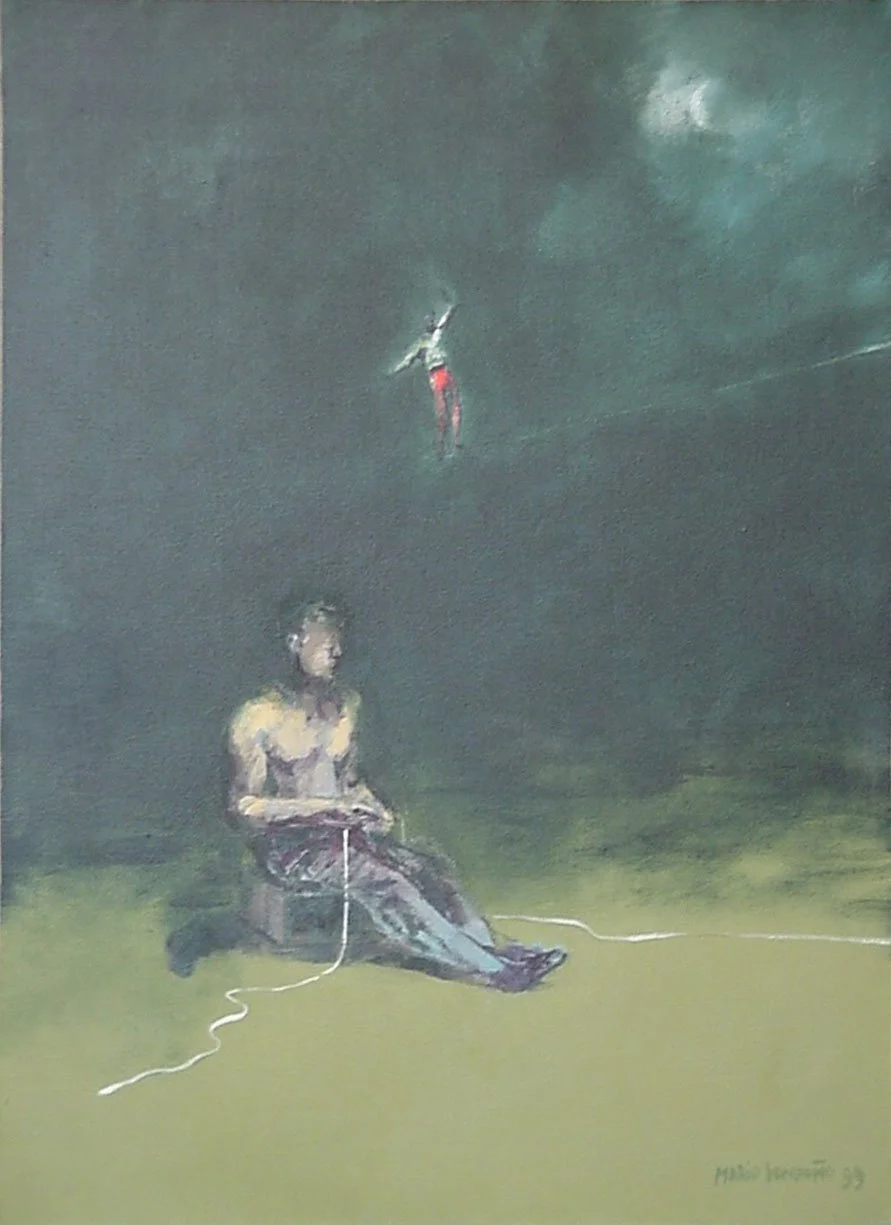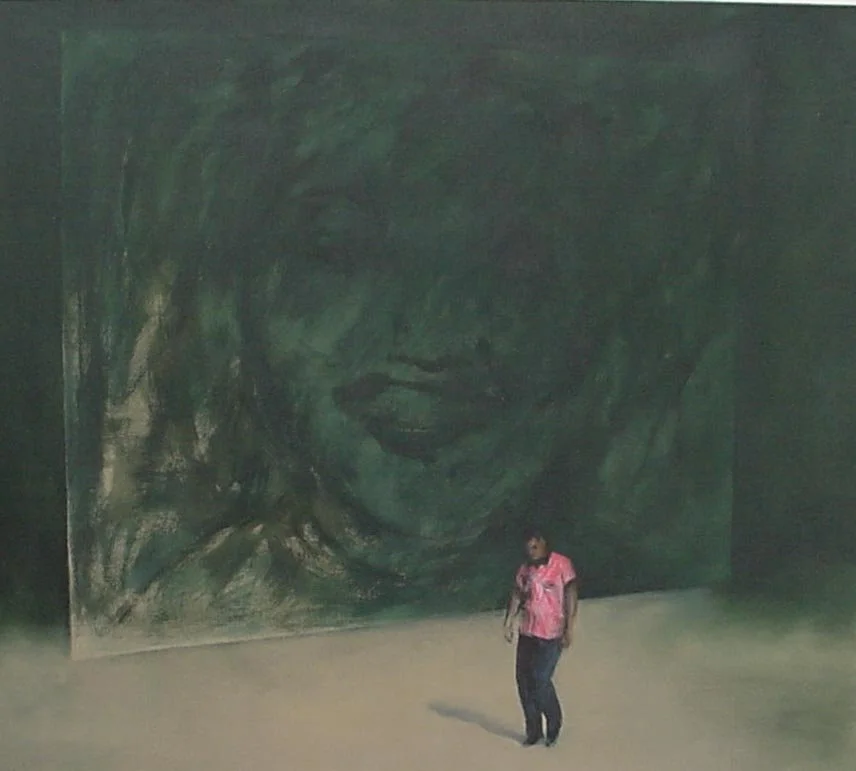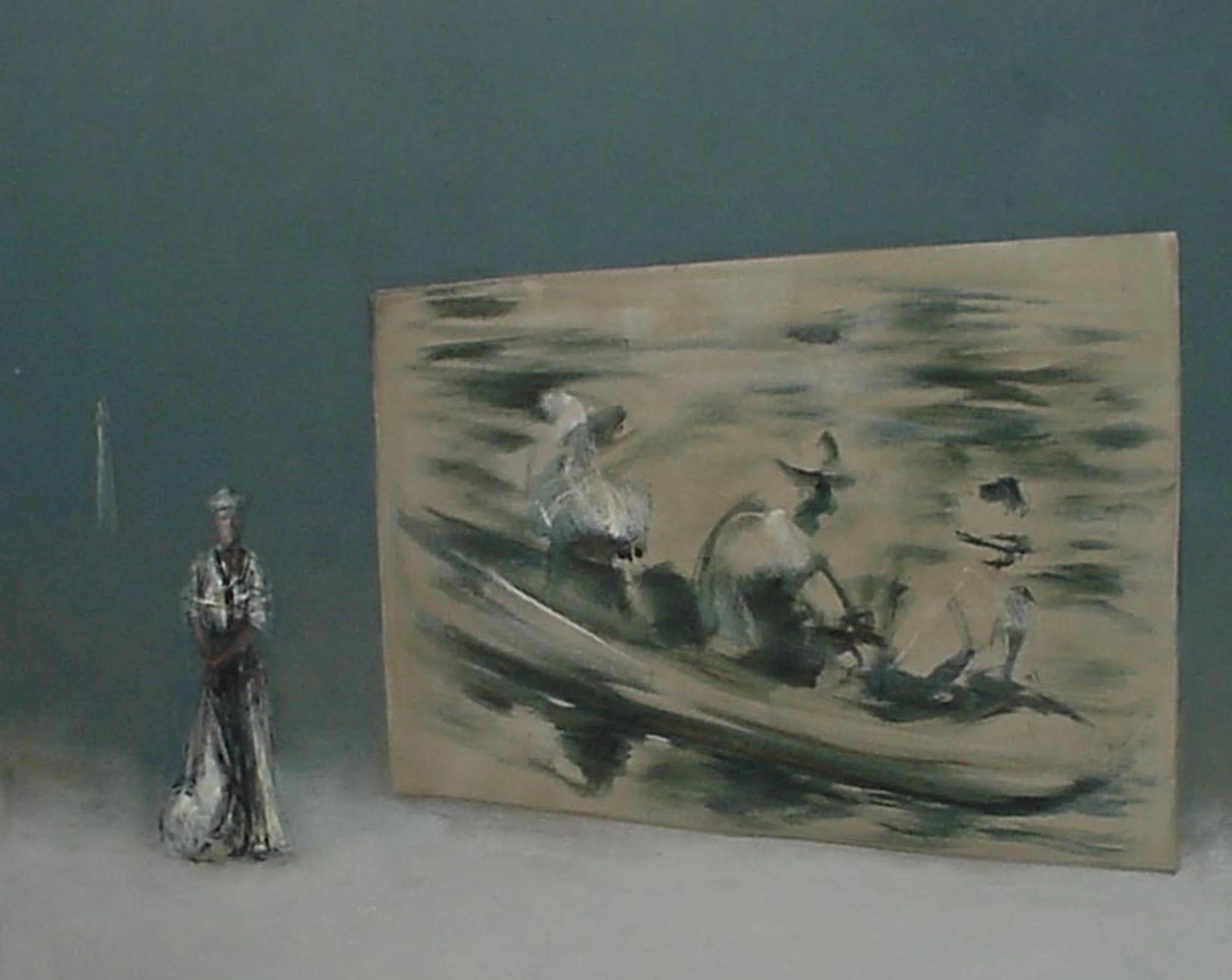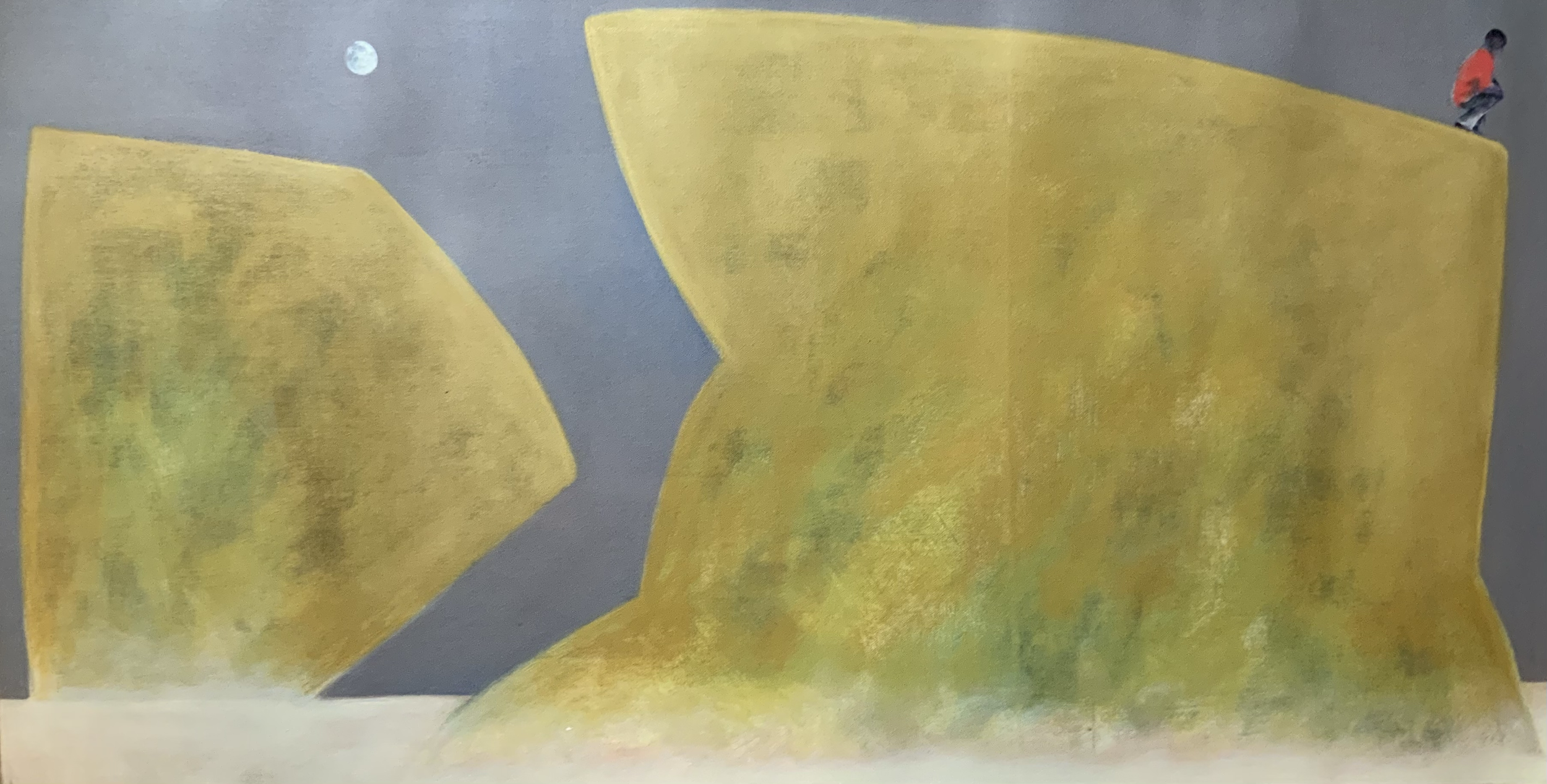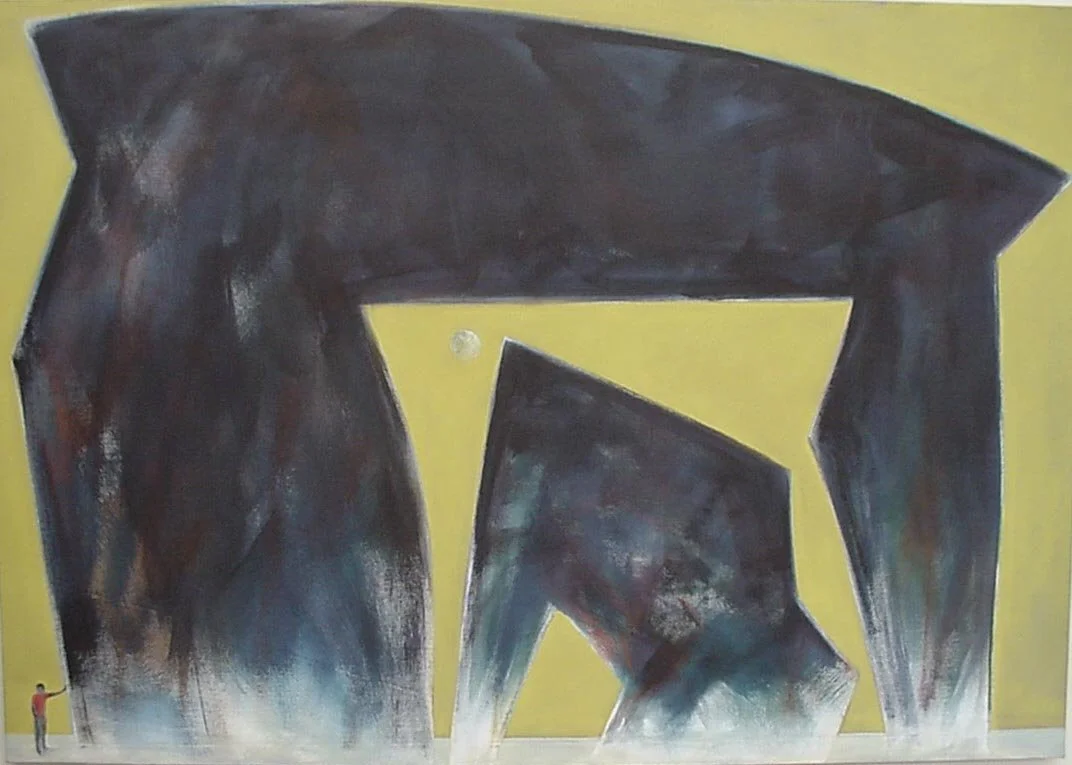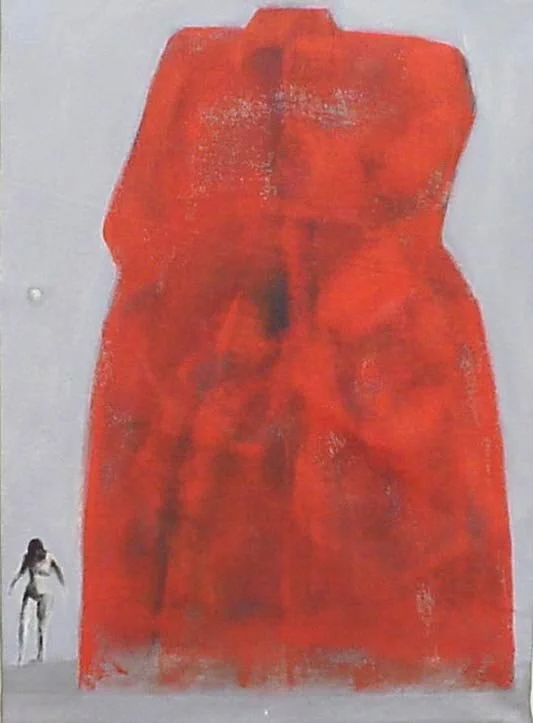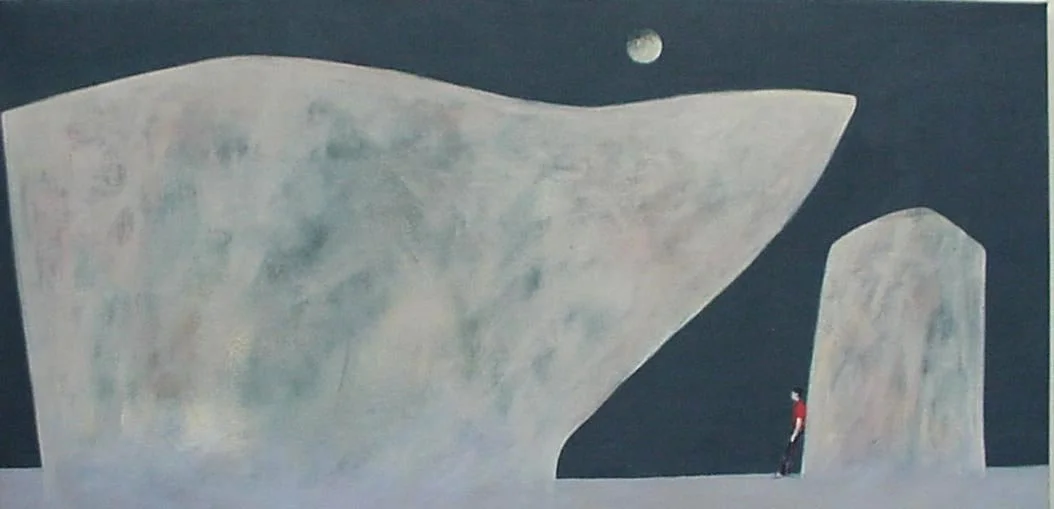Words by Colombian writer and poet Juan Manuel Roca
Mario Londoño’s recent works, rather than being detached, are well distanced from the surrealist syntax that has accompanied him on his journey – that union of the umbrella and the sewing machine on the Lautremontian dissection table – now create a whole where the matter and color zones, by increasing the dimensions of his formats, become more pictorial. Color and brushstrokes that capture those amphibious territories in his work, appropriate a space where abstraction accompanies the figure in a muted dialogue, in dreams that yoke the seen objects and the visited glances.
Vertigo y Quietud, by Angela Garcia for exhibition at the Fundación Arte Vivo Manizales
Now, in these paintings, night appears, other ways of stillness, other images of movement, and the insistence on large spaces. The fineness of the luminous stroke of the mountain speaks to us of remoteness, a moon trait that patents the immense with the suggestion of distance. Proximity and distance sheltered in the air of the dream. In the foreground, precise gestures without detriment to caution contrasting with diffuse faces.
These paintings exert greater agitation the more immobile or fixed they are, more revealing as the scenes are more imprecise, more endearing as they escape easy coherence. The banner is a door, the mast an incision in the sky spurring the mastery of the wind. Stillness and movement, less contextualized the tiger’s step, more hieratic.
Emptiness in this flow of silence. As if men and women detached from chance resign themselves to the capture of the eye that witnesses the cold and magnetism of the night whose thickness permeates the present. Phantasmagoria, a sensation that each image can disappear at the second glance, except for the night, silence, and solitude.
Where does the light of the immediate planes come from? Does it come from the brush or from the presence of the one who stands in front, adding their own silence to that of the painting? There are so few elements, there is such depopulation, as if wanting to highlight absences… and yet in that nakedness, another light, seen already in previous works: a man with his feet on the thread crossing the void is a naked landscape. A fragment of a wing in the blue immensity while the fire consumes the house is a painting whose terror is not covered even by the subtlety of the feathers. The catastrophe is not concealed by the serene contingency of the few active elements. A horse and a rider, stopped in the air or in the desert reveal the imminence of vertigo. The succinctness strikes us and challenges us to constrain the clamor of images. But another type of familiarity continues a literary trajectory, makes us talk with recognized aromas and characters: the horse, the girl who smokes, the tiger.
The oneirism results from the flickering of the nearby scenes, but also from the sway of appropriation and disappropriation by the painter that becomes innocence, as Marcel Schwob would say “between terror and pity”. That not understanding why through him these things appear on the canvas. A feeling that the finished painting surprises the painter and installs him in his spectator self; here is where ubiquity lies: belonging to the dream while being our alien possession.
And a tension persists despite the limitless spaces. Everything is dense: the luminous substance of the gaze, the intimacy of the night, the danger, the solitude, the seal of childhood.
Words by Colombian writer Fabian Castaño for exhibition “Umbral del Sueño, Umbral del Mundo”

